Inside: This post elaborates on everything related to grounding. What is grounding? What is energetic grounding? Spiritual grounding? Some answers for parents who ask, “How to help my child ground?” How is grounding related to earthing? Tools to ground yourself energetically and be energetically present? Including examples and a free downloadable course.
Energetic grounding or spiritual grounding refers to whether we are centered in our physical being, present in reality, and aligned with the Earth. Are we present? Are we here, in the now?
You know those mornings… everyone is awake, but nothing goes as planned. The kids walk around the house like zombies. Everything their siblings say annoys them, and they’re constantly bickering about nothing.
We try hugging them. We try getting them dressed and ready, but it’s pointless. Things constantly dissolve into frustrated tears, ours as well as theirs. They can’t explain why they are like this.
It colors everyone’s morning, if not their entire day.
What is energetic grounding?
We are spirits embodying a physical body, meaning it is not only our physical body we need to have with us during our daily adventures. We need our luminous parts, fields, halo, energy, soul, we call it by many names, to be with us as well, and not only with us, but within us, and around our physical body.
We are energetically grounded when our luminous field, our energy bodies, are aligned to those of our physical body and are here, on earth, connected to the ground. The action of grounding is the action of aligning our luminous parts with our physical body. We pull it down towards the ground, thereby grounding ourselves.
For many children today, it’s not an issue of grounding—they easily travel between dimensions of reality.
A few months ago, one of my girls had several challenging mornings. She would wake up, but she wasn’t really with us, which led to arguments with her sisters.
We all need our mornings to be as calm as possible, so after a few tiring days, I asked her for permission to look at her luminous field, her light bodies. Our family experience has taught us that there is indeed a spiritual answer to any challenge, and I am grateful to have the tools to search for it. Her light bodies were only partially present. She was physically awake, but she had yet to return from her nightly travels. She had yet to be energetically aligned with her physical body.
Being energetically grounded – How does it feel?
Feeling energetically grounded feels good and focused.
When we are grounded, our thoughts are clear.
We know how we feel.
Decision-making is easy.
We are present, able to experience what is going on around us.
We can enjoy the moment without worrying about the next.
It is a state that allows being—manifestation is not possible if we are not present. We can come up with the most brilliant ideas, even start working on bringing them to life. But if we are not present, here on earth, within and around our physical body, manifestation will be hindered.
NOT being energetically grounded – How does it feel?
When we are not grounded to our physical body, we might walk down the street and miss a familiar turn.
We may become anxious about little things that normally seem insignificant.
The less grounded we are, the longer and more challenging it is for us to return to focus.
Those of us who are more sensitive and aware of our energetic fields may feel like our energy has expanded to the far ends of our reach and is dissipating like a vanishing cloud.
As children embody the presence of their energy, and their soul parts, they become increasingly present, grounded, able to focus, and manifest.
It’s tough to be present when you’re not grounded.
Decision-making is difficult.
We worry relentlessly about what has happened in the past and what might happen in the future.
We find it hard to be in the now, hard to enjoy things or have fun.
Our patience levels are lower.
Everything takes longer and feels more challenging.
Children in such a state are scattered and/or floaty and they constantly feel under attack by normal, daily demands. It’s hard for them to keep up, and they may be in a continuous state of anxiety, evoked by the mundane elements of daily life.
And it’s not because they don’t try, they are just not fully here.
3 Techniques for grounding
(1) Naming
The most common spiritual grounding technique invites us to use our five senses to bring us back into physical awareness. Naming objects we see leads us to be present in our specific physical location, as do smelling, touching, stating aloud the sounds we hear, or physically sensing the earth or water.
These techniques are often recommended to guide anxious or fearful children back to themselves.
But where do they need to come back from?
(2) Mindfulness
Mindfulness is another technique frequently used to ground. Defined simply as paying attention to the present moment by focusing on specific actions, such as washing a plate, or on the particular center of the anxiety in our body. It incorporates daily practices such as meditation and breathing and can be practiced as a way of life.
Focusing our attention on the present moment can be extremely helpful when we are only partially here.
Again, the question of where we are, is not resolved.
(3) Earthing
Before we look at where anxious kids and ungrounded kids need to come back from, let’s look at another common grounding technique—earthing.
Earthing is a broad term referring to the alignment brought to our physical being by connecting to the earth.
Walking barefoot, lying on the ground, playing with earth, and hugging trees all help us adjust our inner rhythm, our electric rhythm, to that of the earth. By doing so we can facilitate our presence in the here and now, which leads to health and other benefits.
Earthing is a wonderful way to ground and connect.
Now, let’s return to the initial question—where do we need to come back from?
Light body? Energy layer? What are they and how do they relate to grounding?
The path to our solution for our morning travels through our perception of our light bodies, our energetic layers.
There are many terms that refer to the energy layers around us: auras, luminous energy fields, and others. Most of us are, at least to some extent, aware of the luminous layers surrounding us.
If you have not yet felt them, try the basic exercise used to explain to children where we work in a shamanic session (in the window that opens, scroll down to the image).
In general, we imagine our luminous field, our light bodies, as surrounding our physical body.
But do they all always surround us? No.
During different activities, different energetic centers are awake and active, while others are more dormant.
Kirlian photography, for example, shows how energy concentrates in specific areas, such as around our head or around our heart, as a function of what we are doing.
Grounding is a symptom.
To understand energetic grounding, allow me to generally define not being grounded as a situation in which part of our luminous energy field, our light bodies, leaves us.
Meaning, we are physically present in our body, but some of our energetic layers are not fully here with us.
Can that be? Let’s look at the shamanic concept of soul parts as an example that can help us better understand this idea.
Soul parts? Energetic grounding and the shamanic concept of soul parts
What are soul parts?
Symbolically, soul parts are parts of our energy, our soul, that for some reason, at some point in time, could not be in our physical being and left it, distancing themselves from our physical form. They are a quantum of our energy.
This can happen because something in the physical world was too much for them or because of a violent situation or enormous physical or emotional pain.
Sometimes something insignificant happens, really nothing at all, that triggers a pattern or memory from past lives. The soul part can’t handle it and departs.
Some fragments return as soon as the situation is resolved, but others do not.
Instead, they go to various places, where, when it is safe again, we can find them and bring them back using shamanic techniques. Sadly, the parts that find it hard to be present are often the healed parts, the trusting, creative, open, loving, and calm elements.
Grounding as a symptom
Most people I know, most of the clients I’ve met, especially children, are either grounded most of the time or are not grounded most of the time.
Trying to help them ground without looking at the source of their choice to not be in their physical body, is often a Sisyphean process.
We manage to help center them a bit, but as we only address the symptom (grounding is a symptom), within a short time, they are usually back to their normal state of not being aligned with their physical body.
Making space for soul parts
From a shamanic perspective to soul retrieval, there is another component to be addressed—little imaginary friends.
Energies around us, unseen, who were looking for a home and found it within our child’s energy field. Our kids often enjoy the presence of these energies. Many of them, in fact, invite them in, unaware. However, just as our physical bodies are ours, so are our energy bodies. Only our essence and soul parts should be in them. When we have guests, it’s crowded, and it’s harder for our own soul parts to find their place.
And if our own soul parts can’t be with us, we become anxious and can’t ground. Is this the case for every anxious child? Every child who can’t ground, focus, or be present? No, but it is a common scenario.
When working with these children, we start by clearing the energies that do not belong to them and helping those energies find their way home.
Once there is room, the child’s own soul parts start to return. As they embody their presence, the children become increasingly present, grounded, able to focus, and manifest.
An example: Helping children create space for spiritual grounding
One of my clients is a 13-year-old girl. We started working together for a plethora of reasons. I worked with her directly and also received input from her mother. One of the things that annoyed her mother was that she felt her daughter could not finish anything. She would get excited about something, playing, drawing, crafts, but within a short period of time, she would lose interest. While this was not the reason they approached me, our work led to results in this area. The more she cleared energies that were not her own, or were hers but did not serve her such as patterns from other lifetimes, the more soul parts returned to her. She became more whole, and once she was whole, she could stay focused on her choices for longer periods of time.
Another example was with an 8-year-old boy. We worked a few times, and our work seemed to help him with anxiety and other issues. We then met over Zoom so I could teach him how to notice where his light bodies were and how to clear out energies he was picking up unaware, wherever he went. Two weeks later, his mother reflected, “When we get home, he takes off his shoes, even if it’s raining! He jumps around in the dirt. I know this is not what you taught him, but he says this works better. I think he got the idea and is now using it in his own, unique way. Is that OK? And the mornings, wow, it’s amazing. He still loses himself often. We decided that we wouldn’t say anything, but you know, just being aware, he sometimes looks at us, and I feel that he can see the invitation to come back, in his own time, in my eyes. And he does. Thanks!”
Kids know what’s right for them. This boy understood the concept of connecting, and giving to the ground and is doing it in a way that feels right to him. As long as he is doing it and it works, nothing else matters. As for their mornings, I share this example to show that it’s often our awareness and understanding that matter most.
Energetic grounding in transformative times
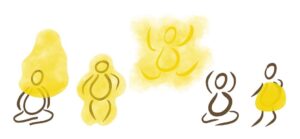
Traveling between dimensions
For many children today, it’s not an issue of grounding—they easily travel between dimensions of reality. In one moment, they are present and centered, and in the next, they seem to be daydreaming, possibly going to do something somewhere else. In our physical reality, it seems like they are not listening to us. If they need to engage in an activity, they can’t concentrate, or they become frustrated and anxious. It is not because they are not able to be present like in the above examples, it is because they are busy doing something in a world we can’t see. Sometimes aware of it themselves, and sometimes not.
Active reception
Another common situation among sensitive children is active reception. They perceive much more input from the environment around them and are not always able to filter it. Therefore, many of them can’t handle noise or being around more than a small number of people. They may return home overwhelmed. Being overwhelmed sends parts of them out of their physical body, necessitating a much longer and intentional regathering into their physical presence.
Guiding children in grounding
More and more such children live among us. I often feel that part of our role as parents to these little luminous beings is to guide them when and how to come in and out so that they learn how to travel with intention.
With proper guidance, even the most sensitive children can learn how to gather themselves and return to their center.
They can learn to enjoy their gifts, and benefit from them, instead of their ability becoming a source of challenge in their lives.
One more question: Considering the multidimensionality of our time, we must ask one more question:
Do we wish to be in our physical body? Is grounding an ultimate goal?
Being constantly grounded might have been a goal in the past, but I feel it is not anymore. So many children bring this ability to shift, move, and travel between dimensions that, assuming they must only be here, energetically grounded, does not feel right. They ask to be able to shift. Staying continuously grounded is not supporting who they are in their essence.
Let me try to put my thoughts in order here.
We all choose to be here in a physical body, in form. Yet we are all much more than our physical presence. Being in form does not mean we need to condense ourselves. It means we need to learn when we need to be fully present, physically, and also when we need to expand.
When I cook or cut vegetables, I must be fully present in my physical body. It’s not the right time for me to travel in parallel, as I could cut myself or burn something. I need to be fully present and focused. Driving is another such example. In order to drive, I need to be fully present, and I can’t let my mind wander. You know those situations when you’re driving and suddenly reach your destination, but you have no idea how you got there? I can’t have that happen to me, that’s not being fully in my body.
On the other hand, when I create, I don’t want to be entirely focused. I want to open myself up to a broader web of connections, to expand and allow new ideas and thoughts to come in. Writing is the best example for me—I don’t want my analytical mind present when I write. I invite it in when I revise and edit, but not when I’m writing a draft. That is the time in which I ask to open myself to the possible, and not limit myself to what I have already tried and done. The same is true during shamanic work. I wish to expand myself, and work through my shamanic eyes.
For many of us, and I believe for most of our children, it is about the motion in and out of our physical selves. It is about knowing when we wish to be more in or more out. More expanded or more condensed to our physical body.
In many ways, we could also refer to it in the other direction. Being out is actually being home, in the universe. Being in our physical body is being out—somewhat disconnected from who we are in our essence. So, we need to know where to source from in each moment in time.
What is the right balance for each of us? It is both universal and personal.
Once a child can control this movement, helping him/her ground energetically is no longer an issue.
Am I grounded? Is my child grounded? Is a pair of lenses to look through.
Can everything be explained by asking if we are grounded?
By observing if our kids are or are not?
That would make life so simple, wouldn’t it?
Asking if one is grounded or not is basically a way to observe, like a pair of lenses to look through. Observing our child through the lens of grounding allows a distinction between reasons and, very often, a quick resolution to previously challenging situations.
Remember the story about my daughter?
As we speak the language of energy in our home, the solution was so easy, that I was speechless.
I sat at her side and said, “I see you are not here yet.” That’s almost it.
Then I invited her to close her eyes, take her time, and asked her sisters to step back. Within a few minutes, she was smiling, happy, and here.
Within a few days, it became a little of a joke. She woke up, went straight to the couch, and declared she was not here yet. We all had a good laugh.
She was definitely present and spiritually grounded.
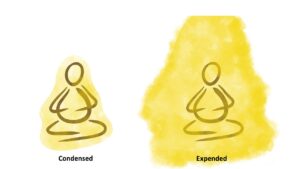
Mornings are a challenging time. As a family, we all need to shift from dreaming into wakefulness. We all need to return to our bodies and slide into our morning routine relatively quickly so that the girls can get to school on time, ready, fed, and here.
We often need grounding time in order for that to happen. Just identifying the cause brought significant relief. We notice. We smile, and we slowly start to invite them back.
I help when it’s hard, pulling their light bodies back into form. I do so only if I see the morning is completely upside down. I much prefer that they come back on their own. By choice. In their own rhythm. Having finished what they needed to finish, even if they can’t explain, or are not fully aware of what they need, just are not here. I prefer that they use their own tools because otherwise, they may jump right back out to wherever they are, without being aware of what is happening. It’s a lost battle. So, if possible, we don’t turn it into one.
Some of us find it easier to be grounded.
Many children are just here.
For others, including myself, it’s easier to be wandering in other dimensions, outside of our physical body.
Spiritually aware children fly out easily and quickly.
It’s not something they have to learn. It’s something they know. Just as they know how to breathe.
We each need to know where our challenge is, to ground again, or to fly out, and then, to learn our point of balance and unity.
What does grounding feel like to you?
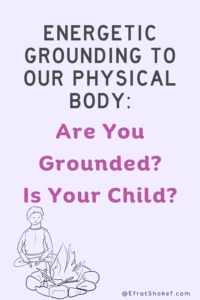
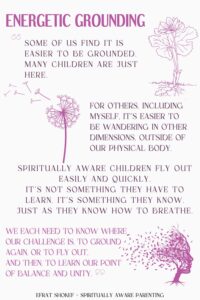
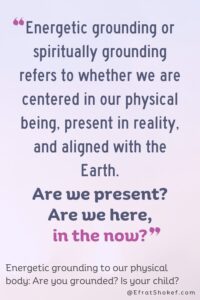
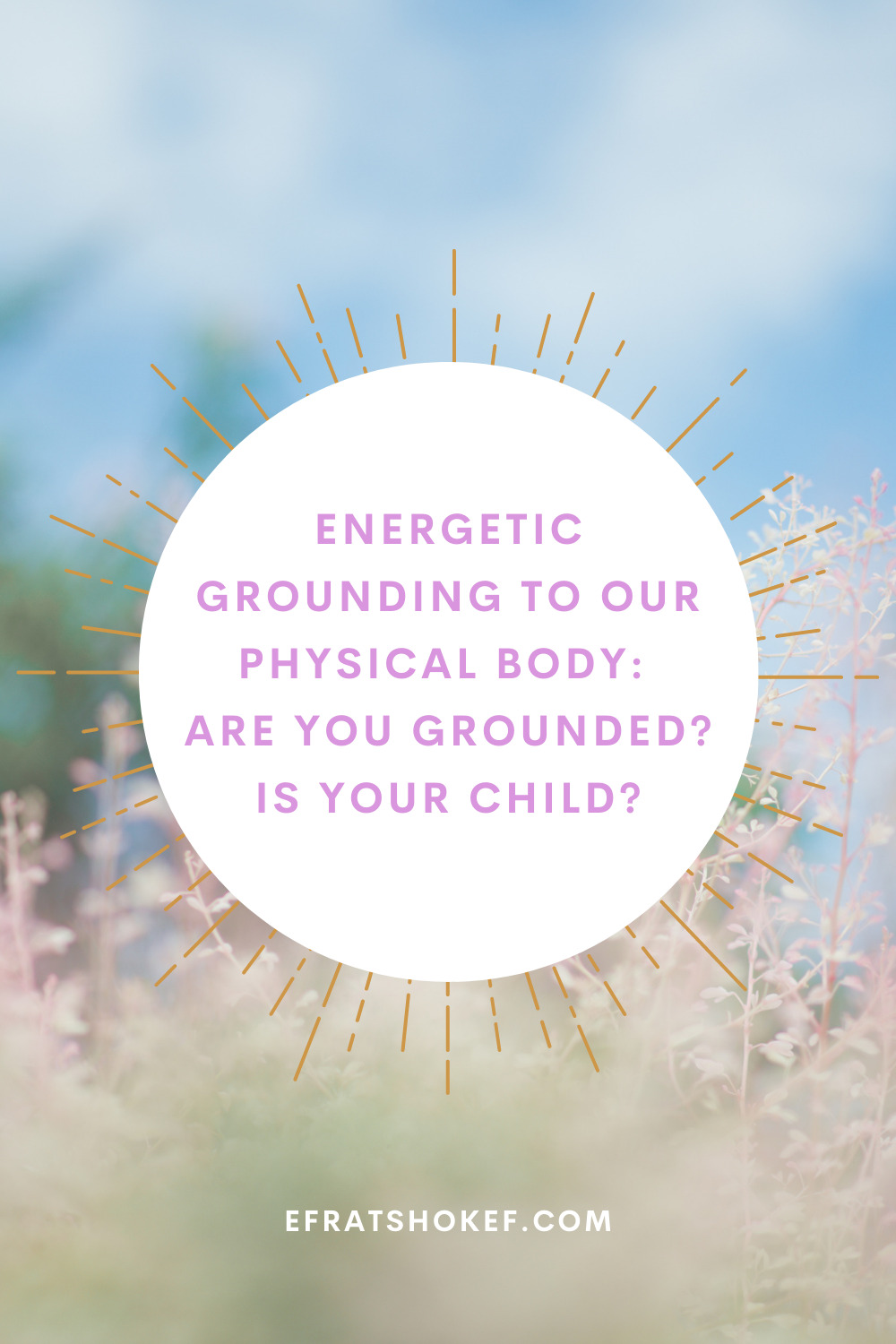
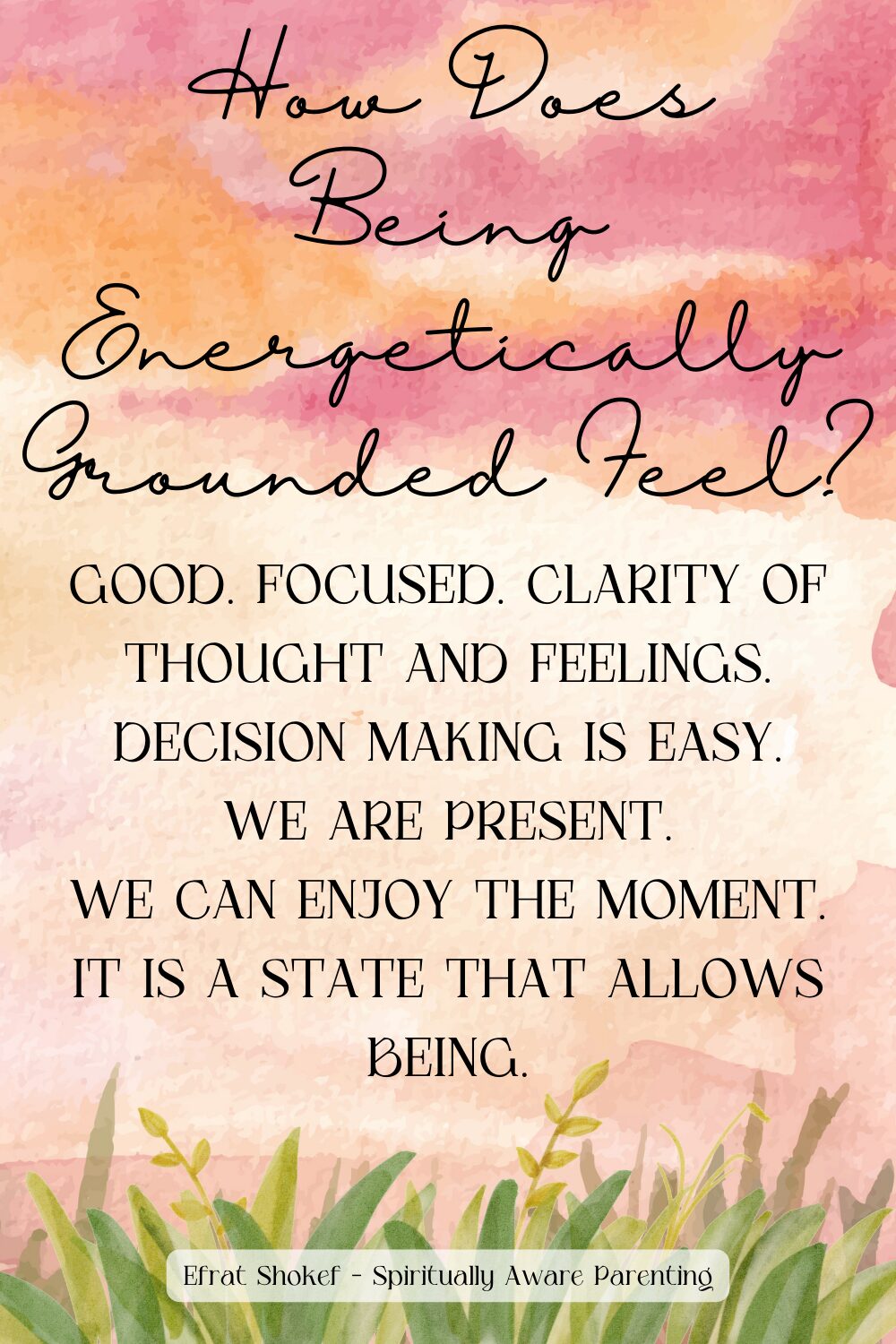
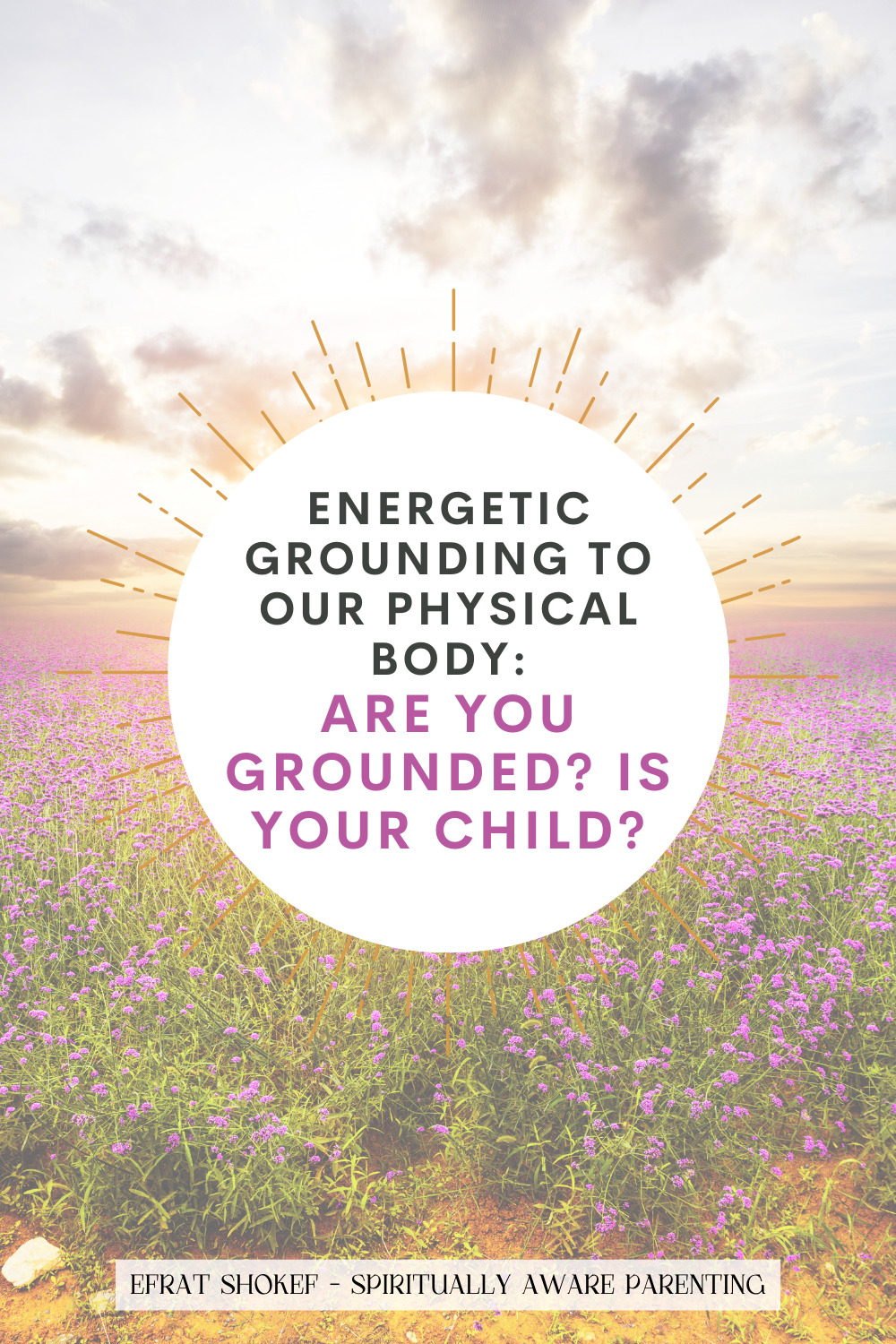
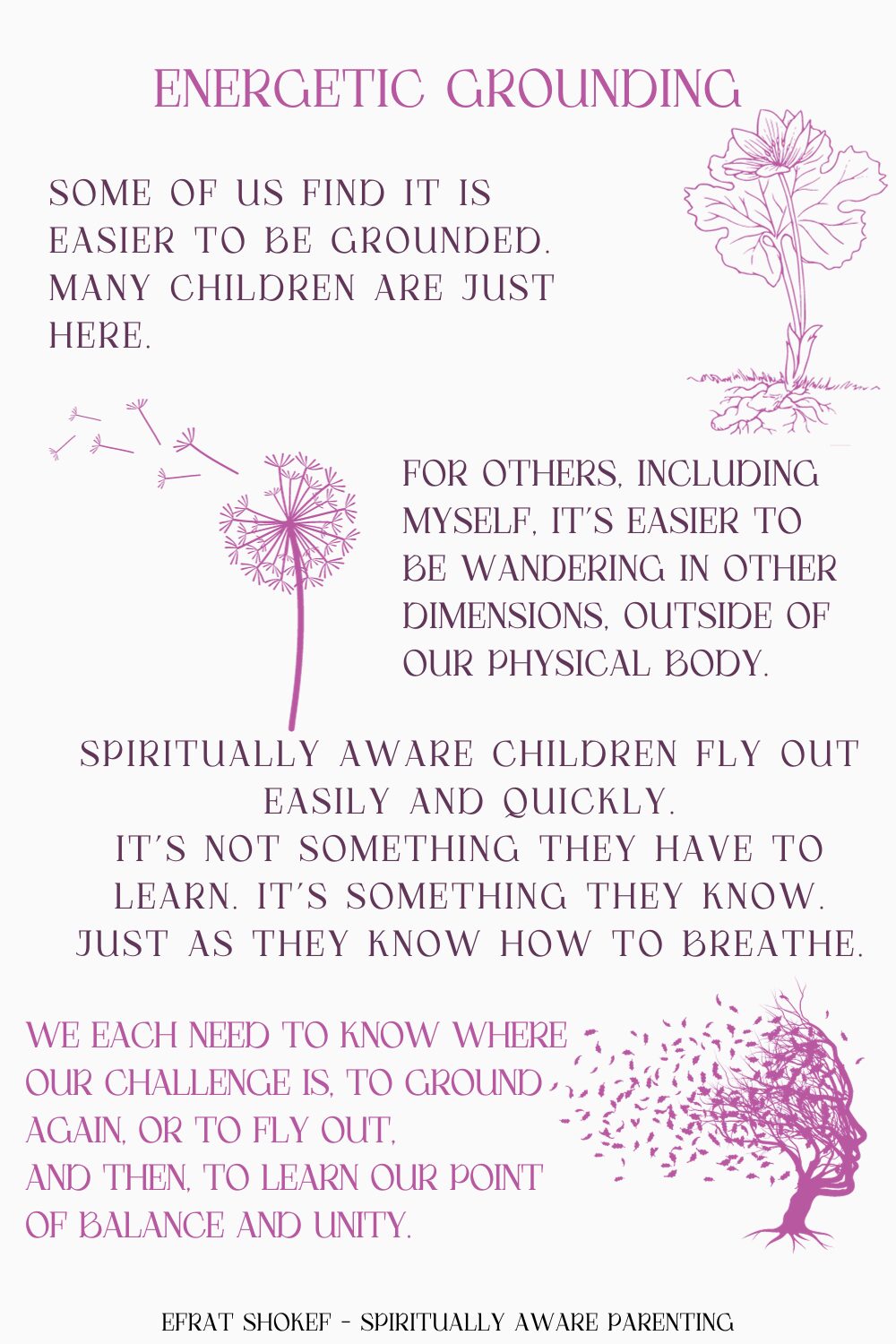
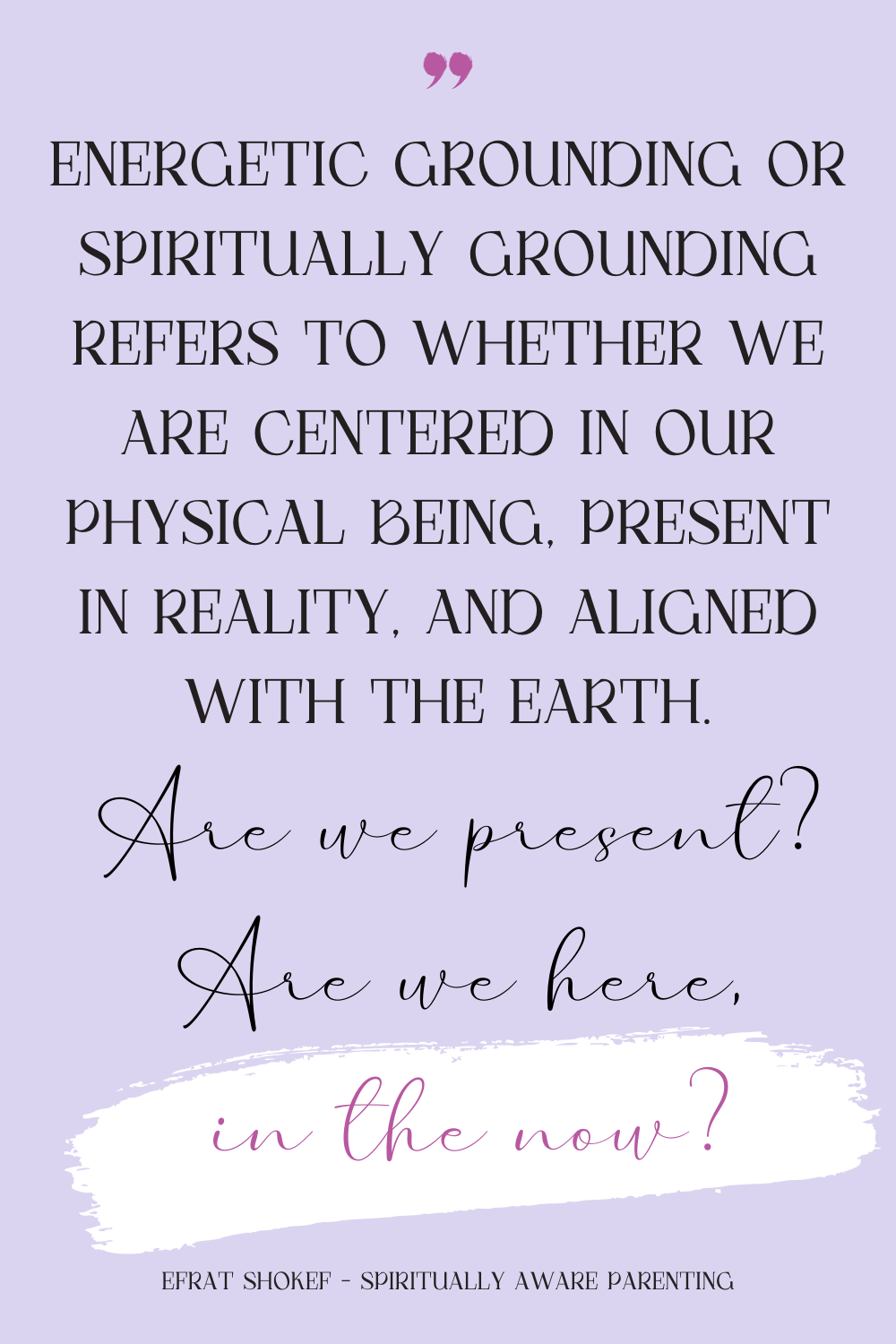
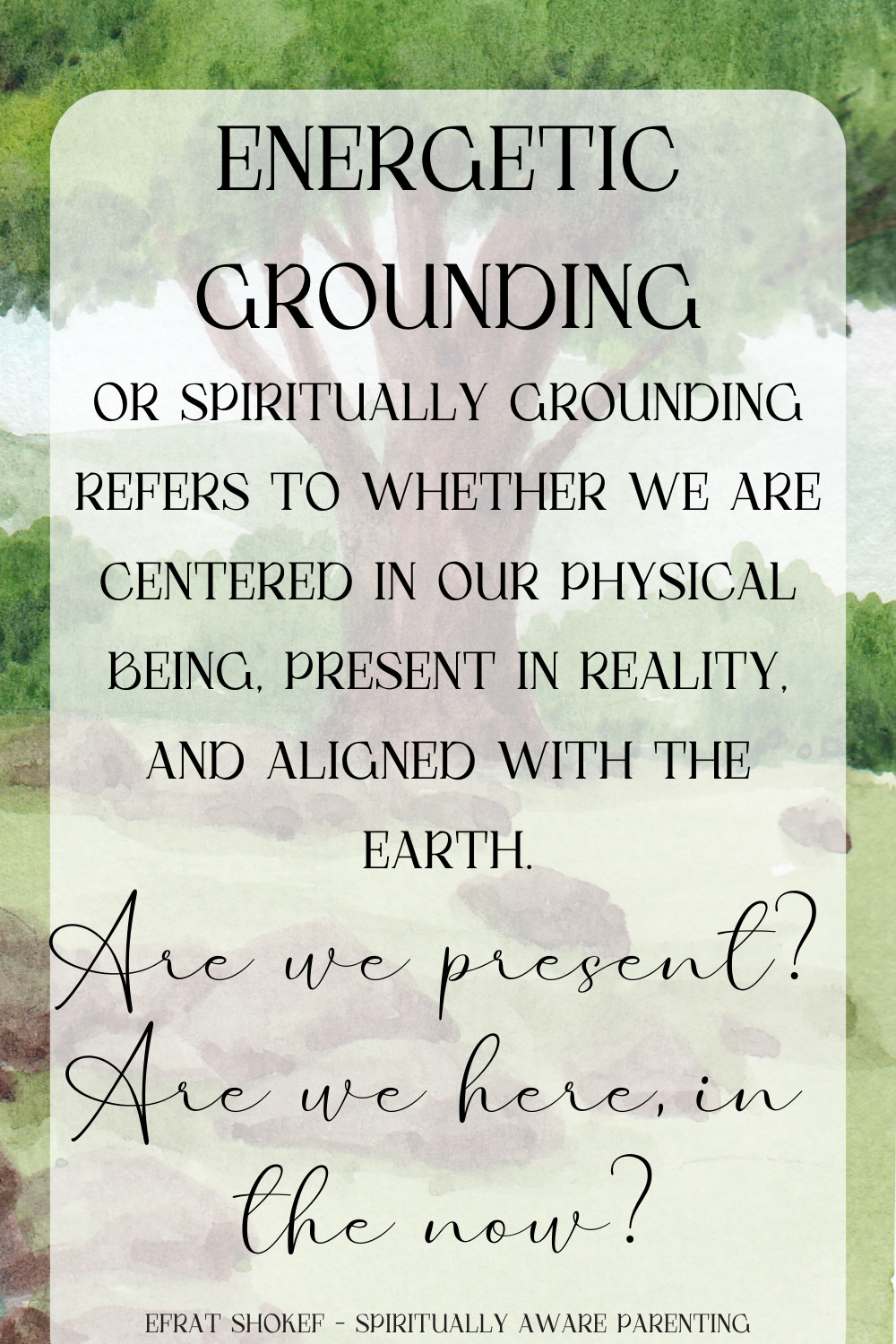
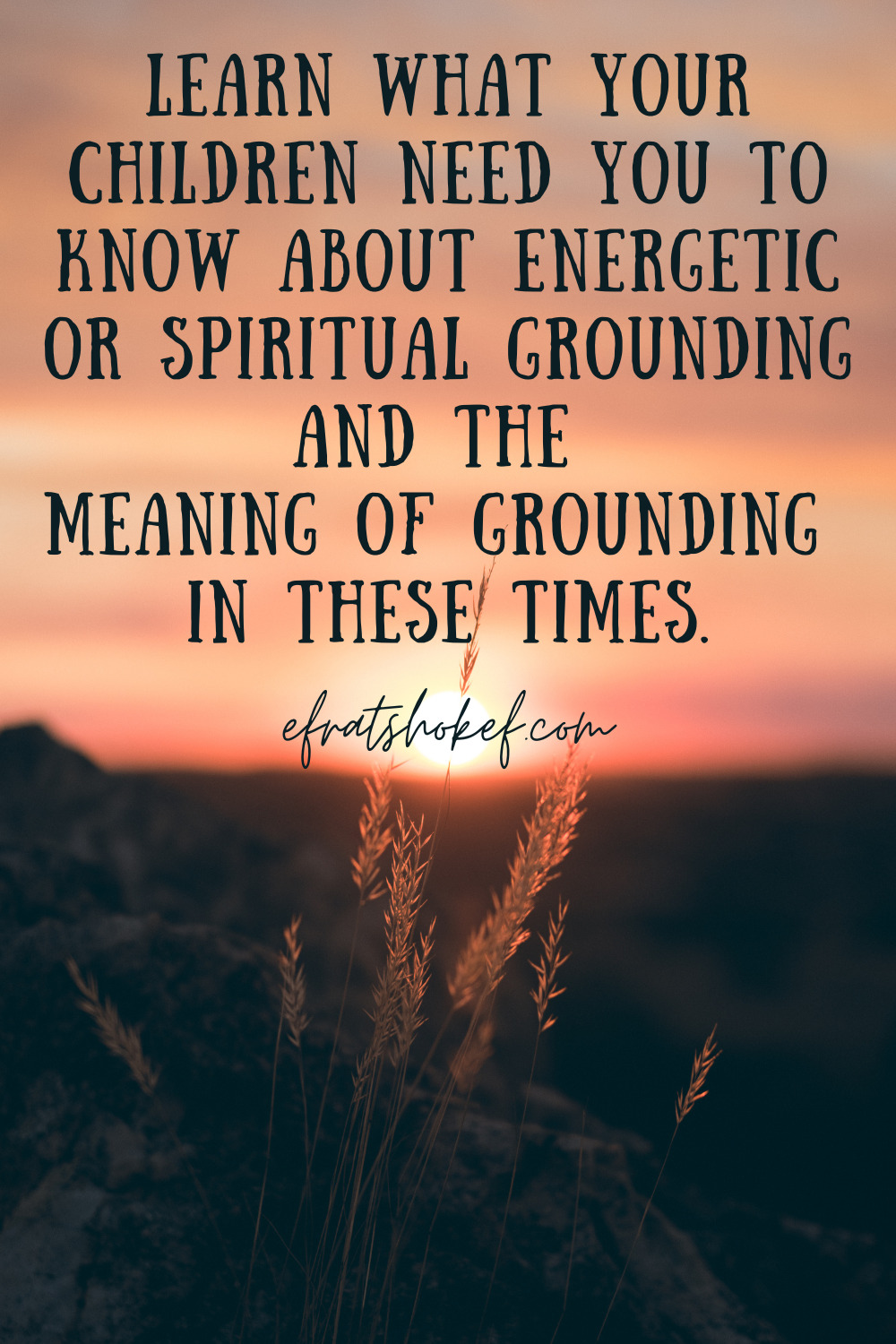

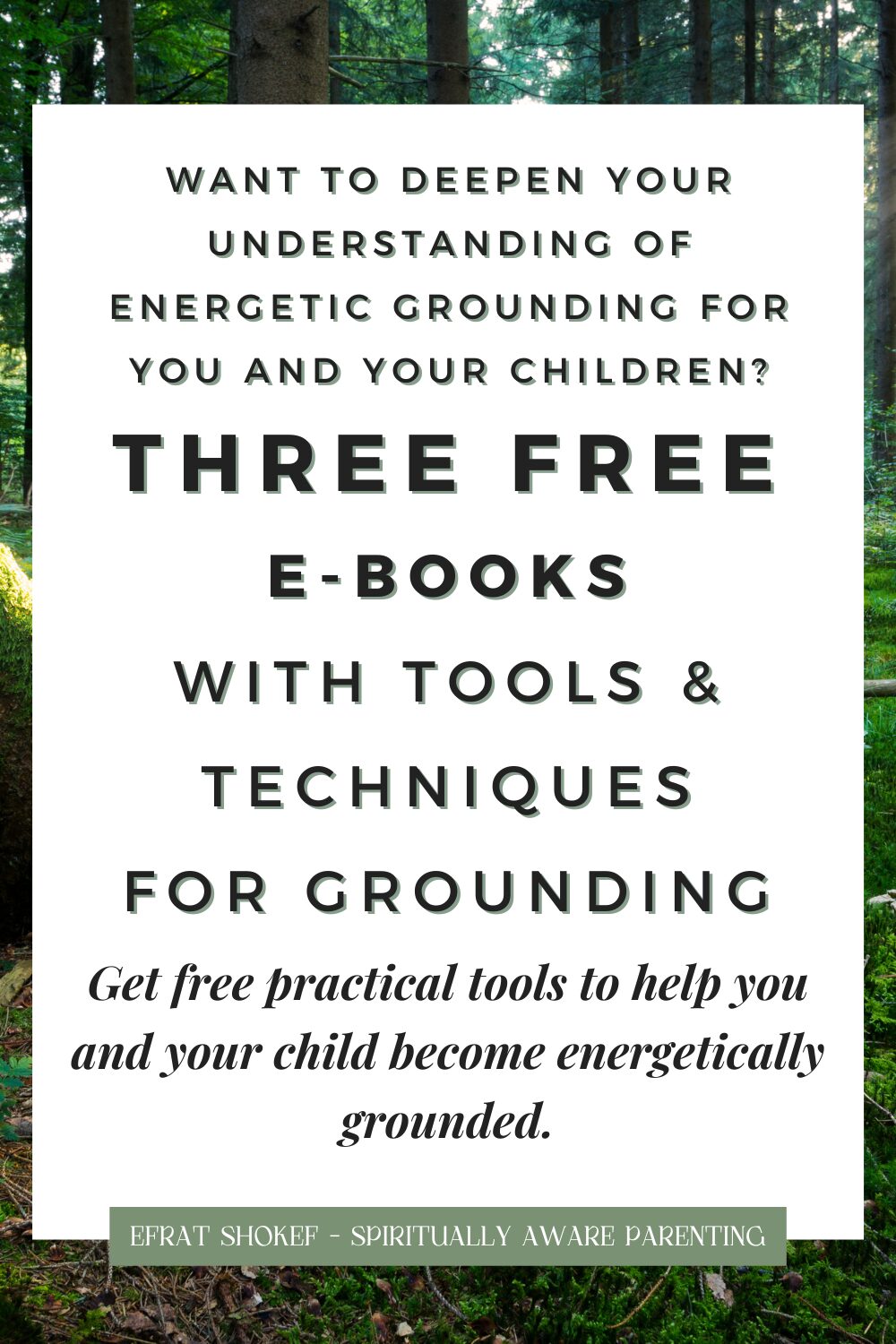



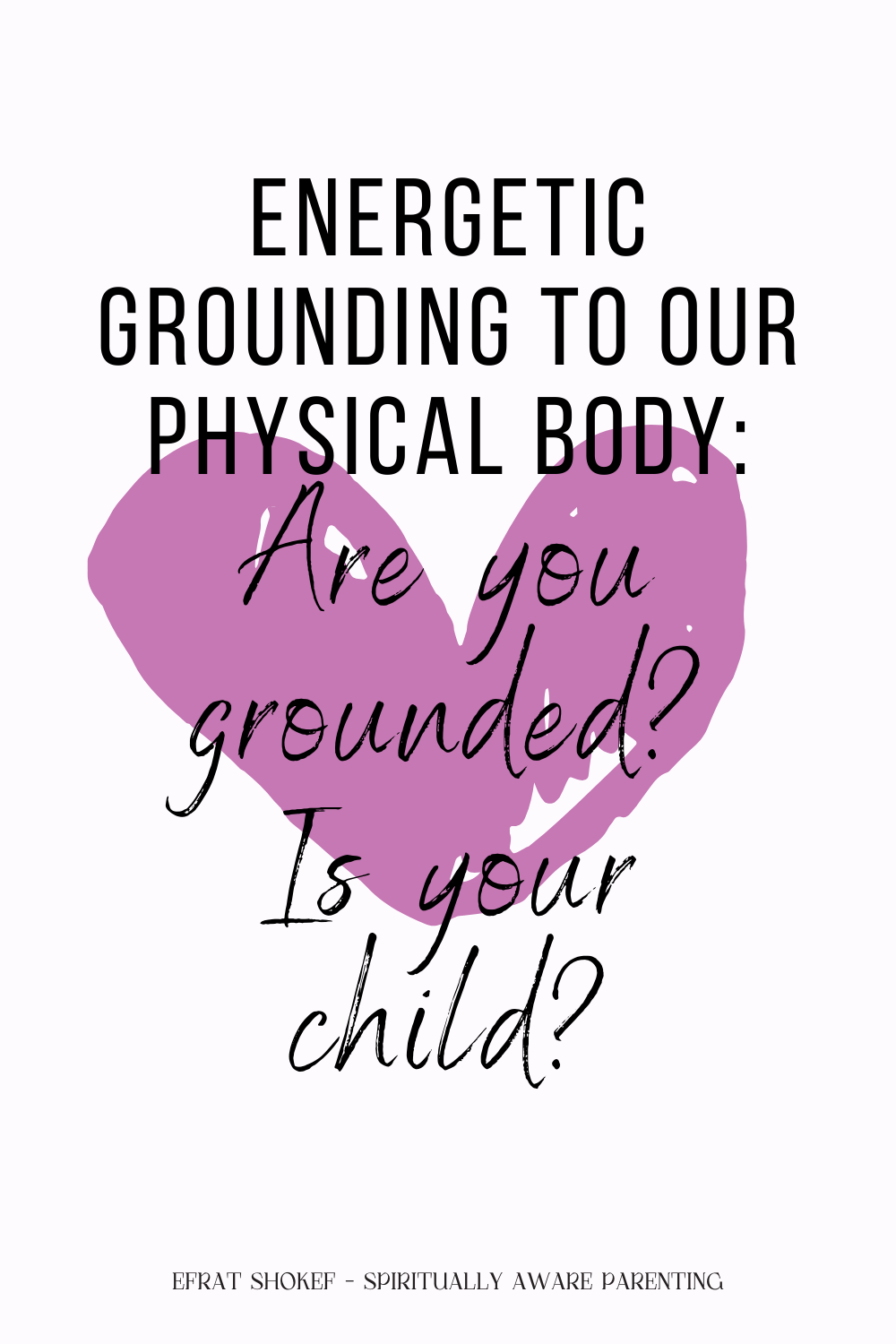

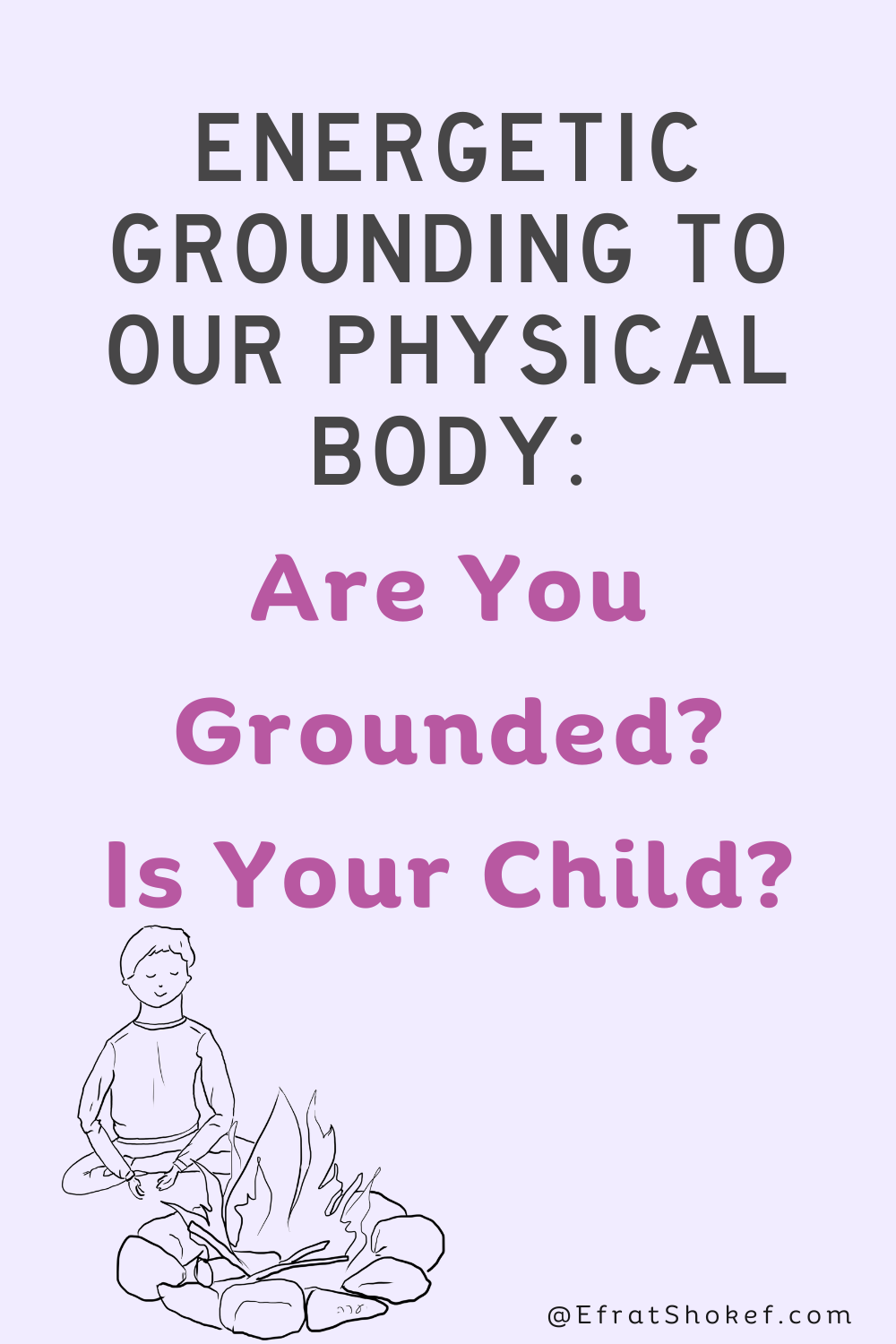
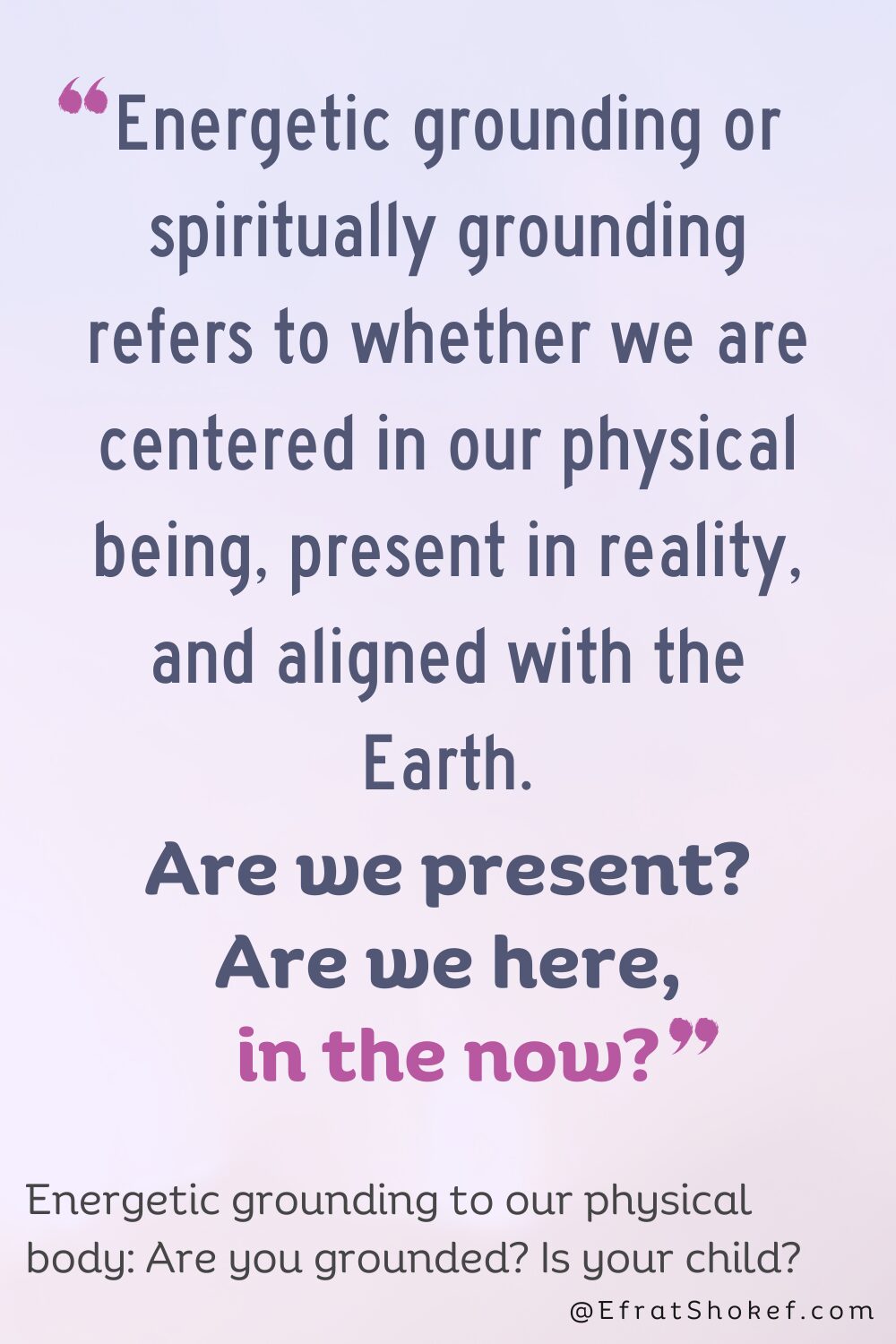
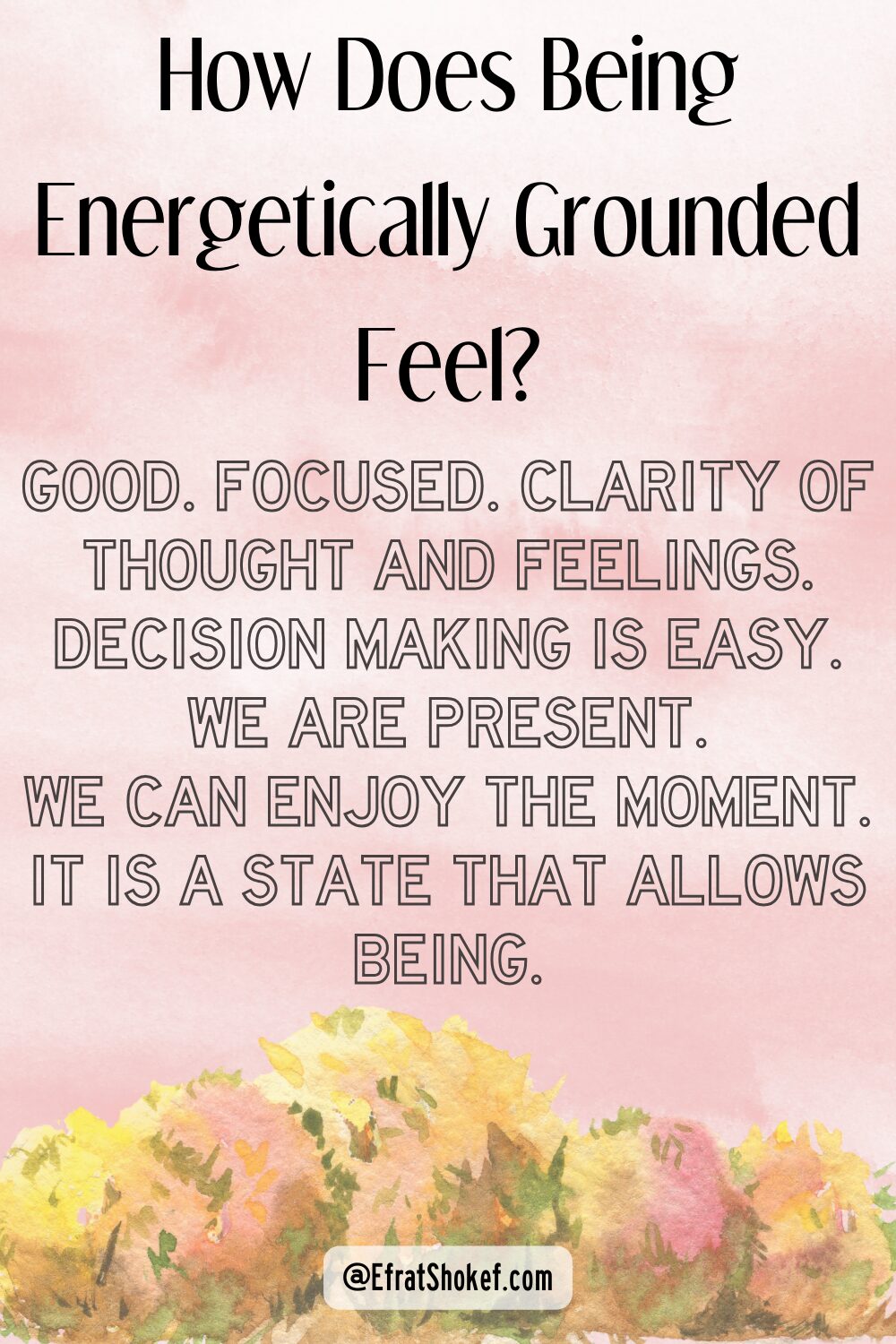
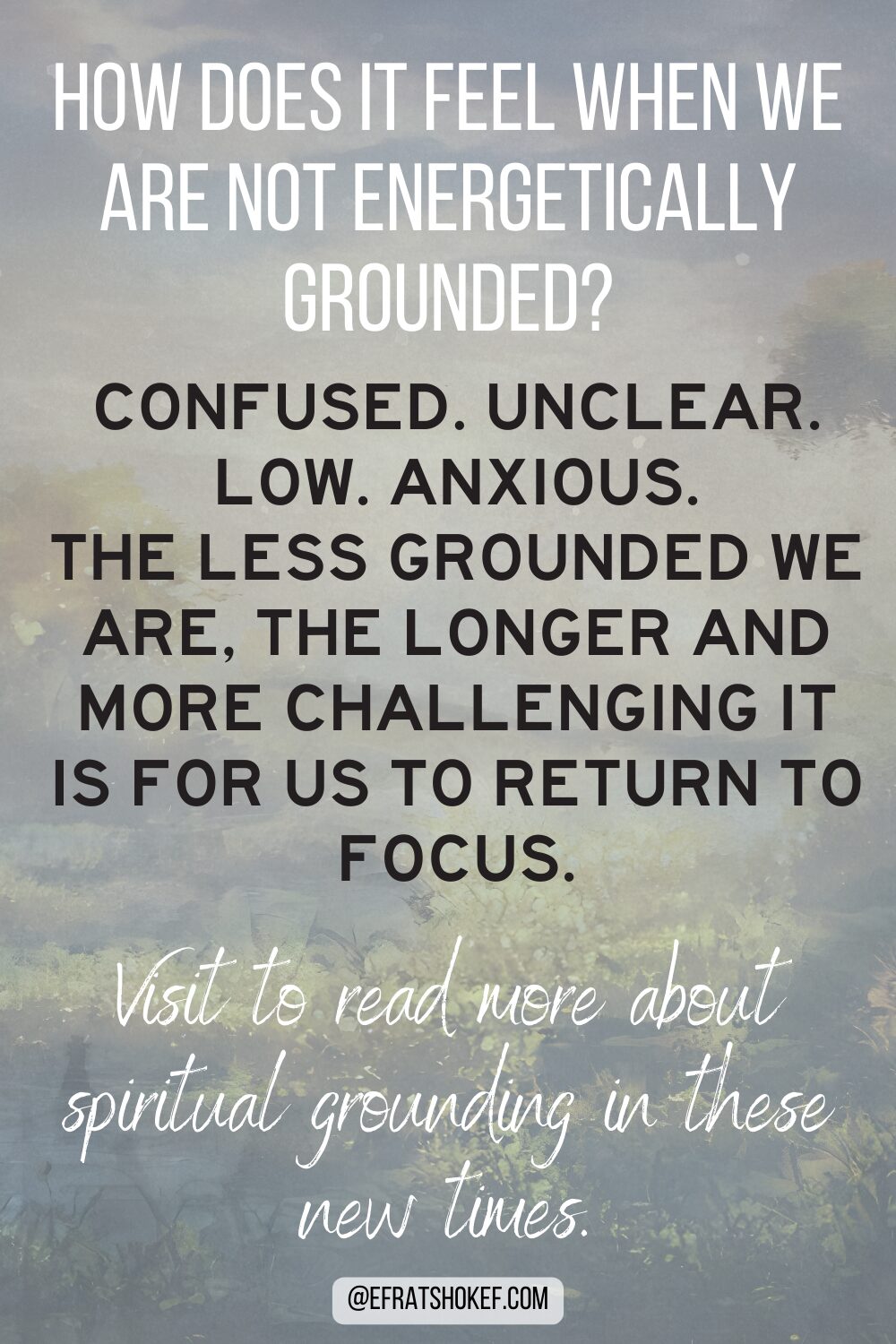
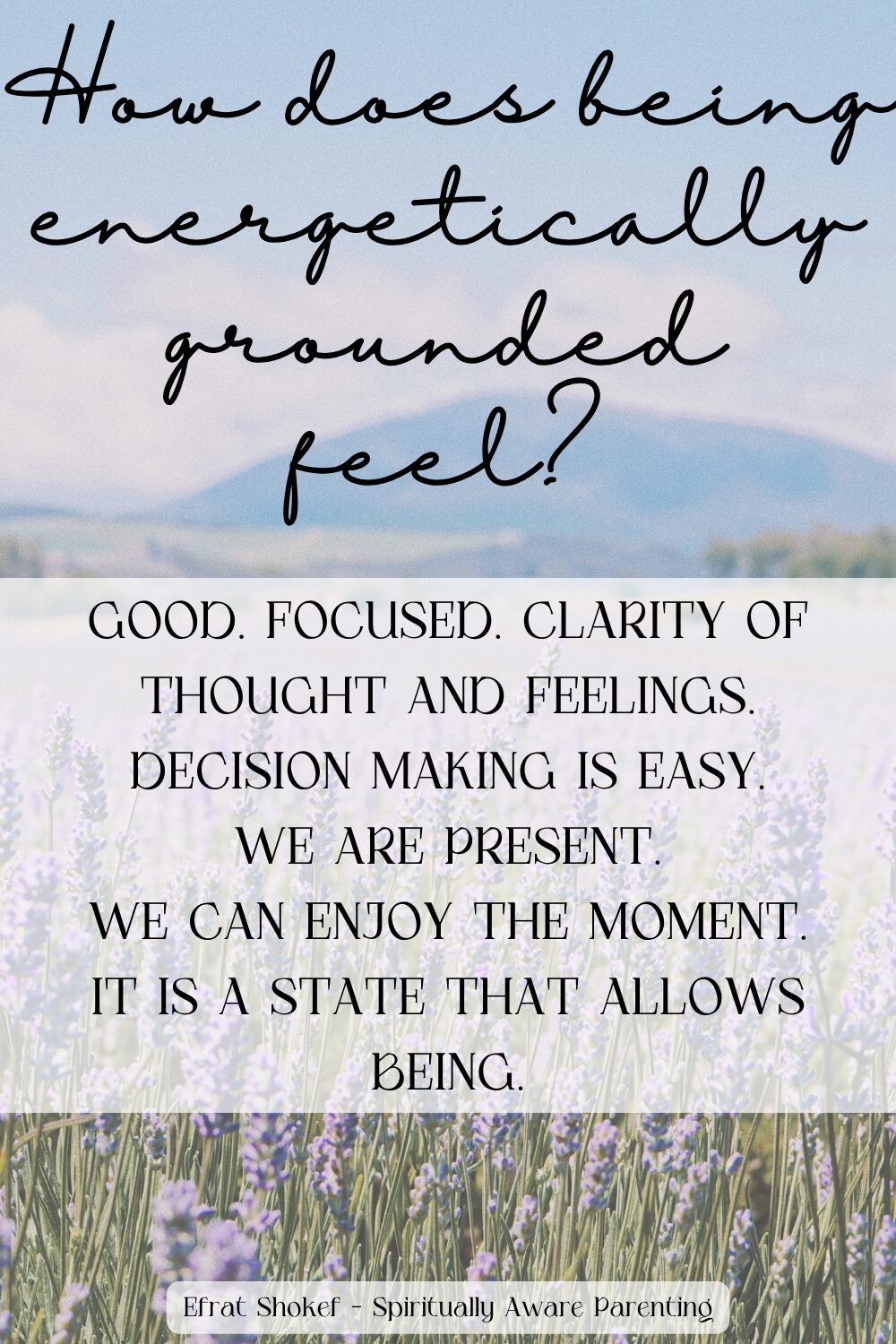
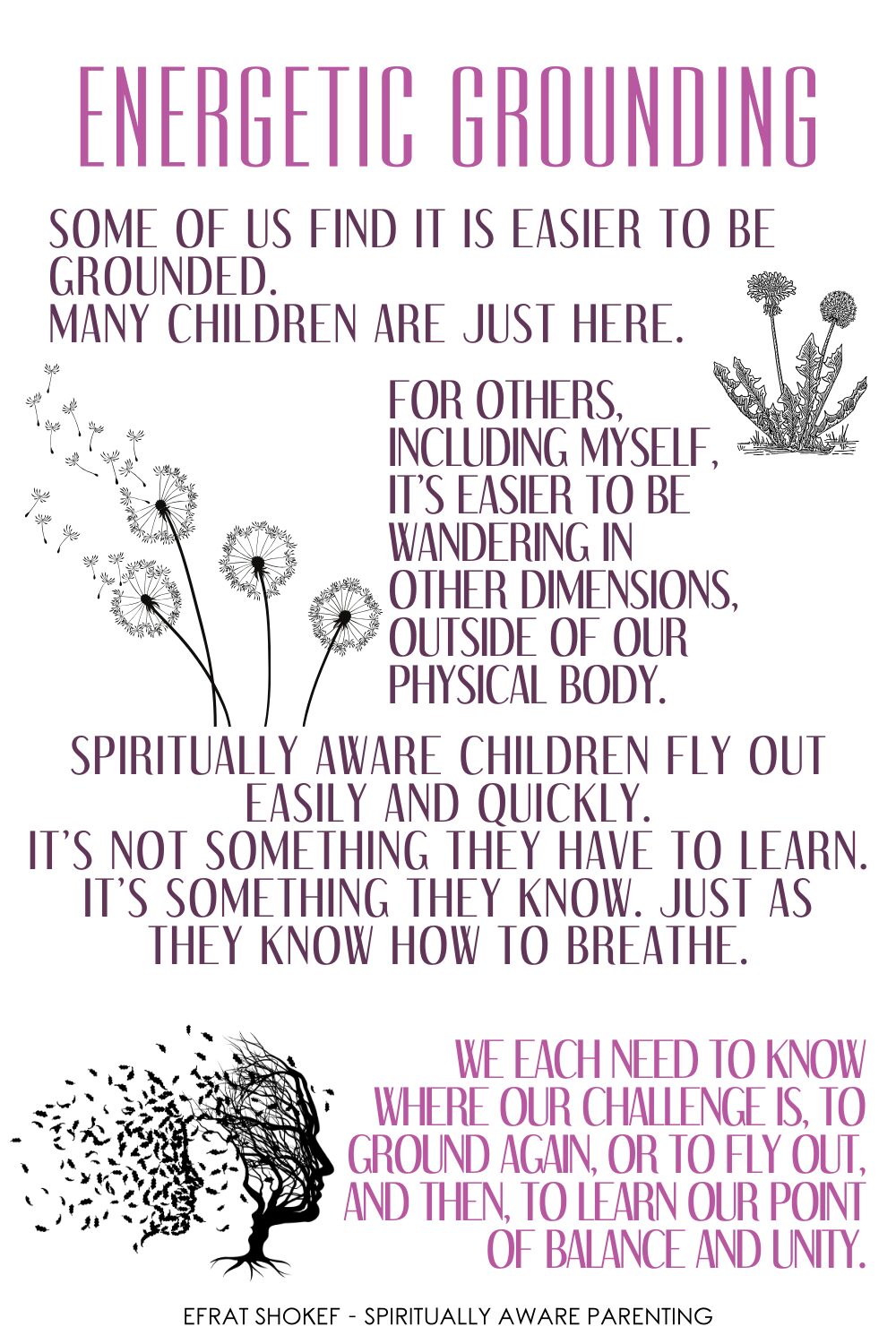
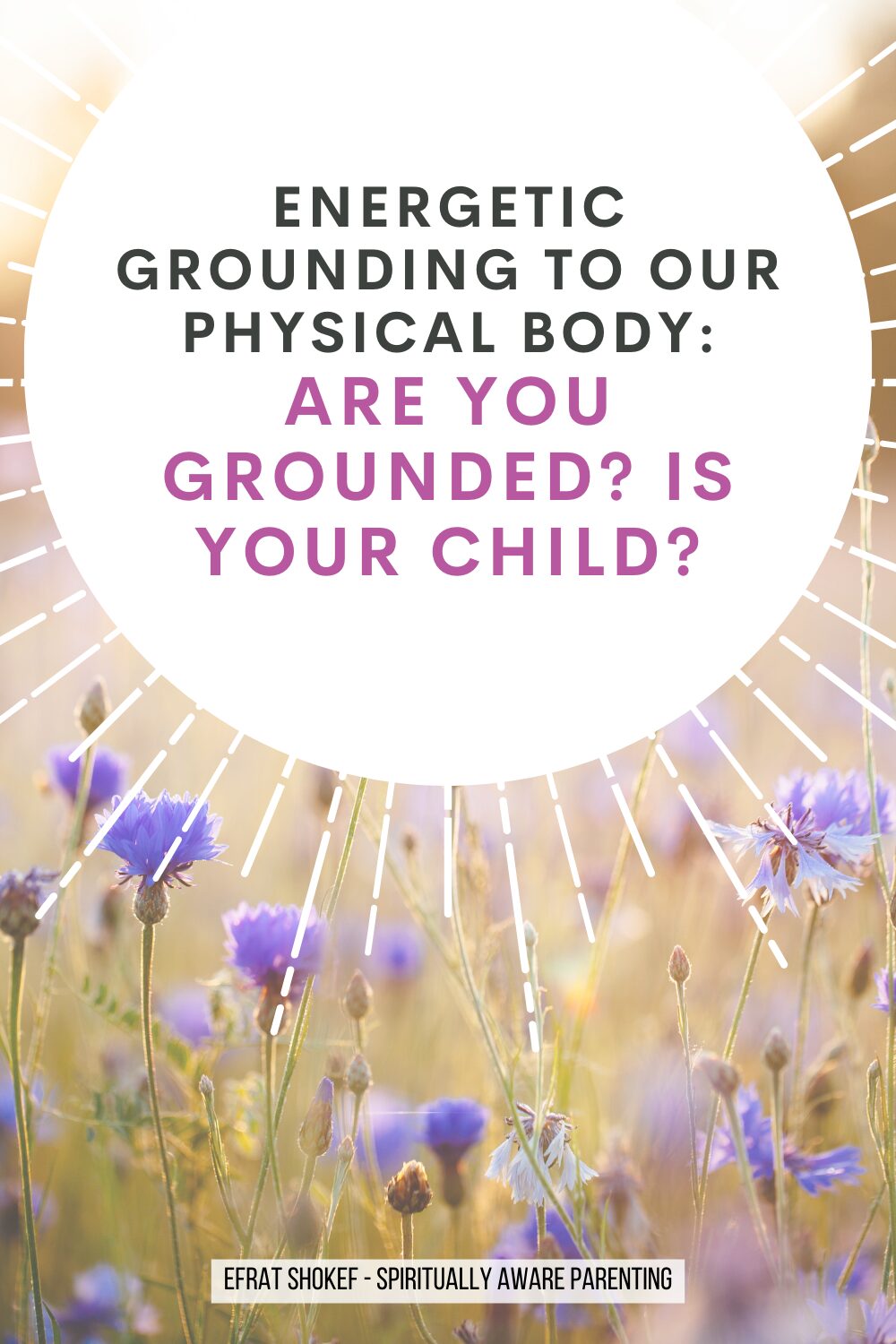

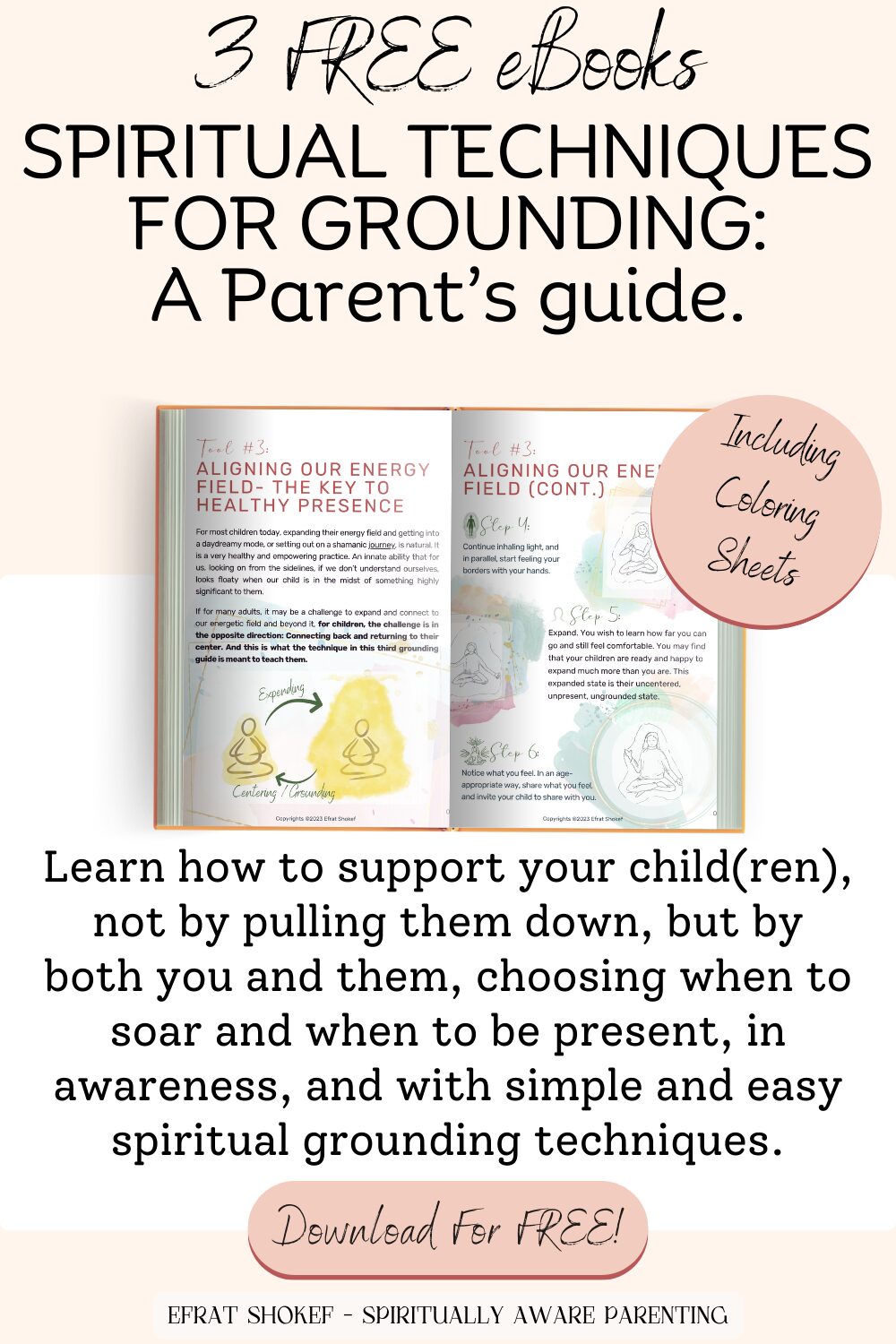
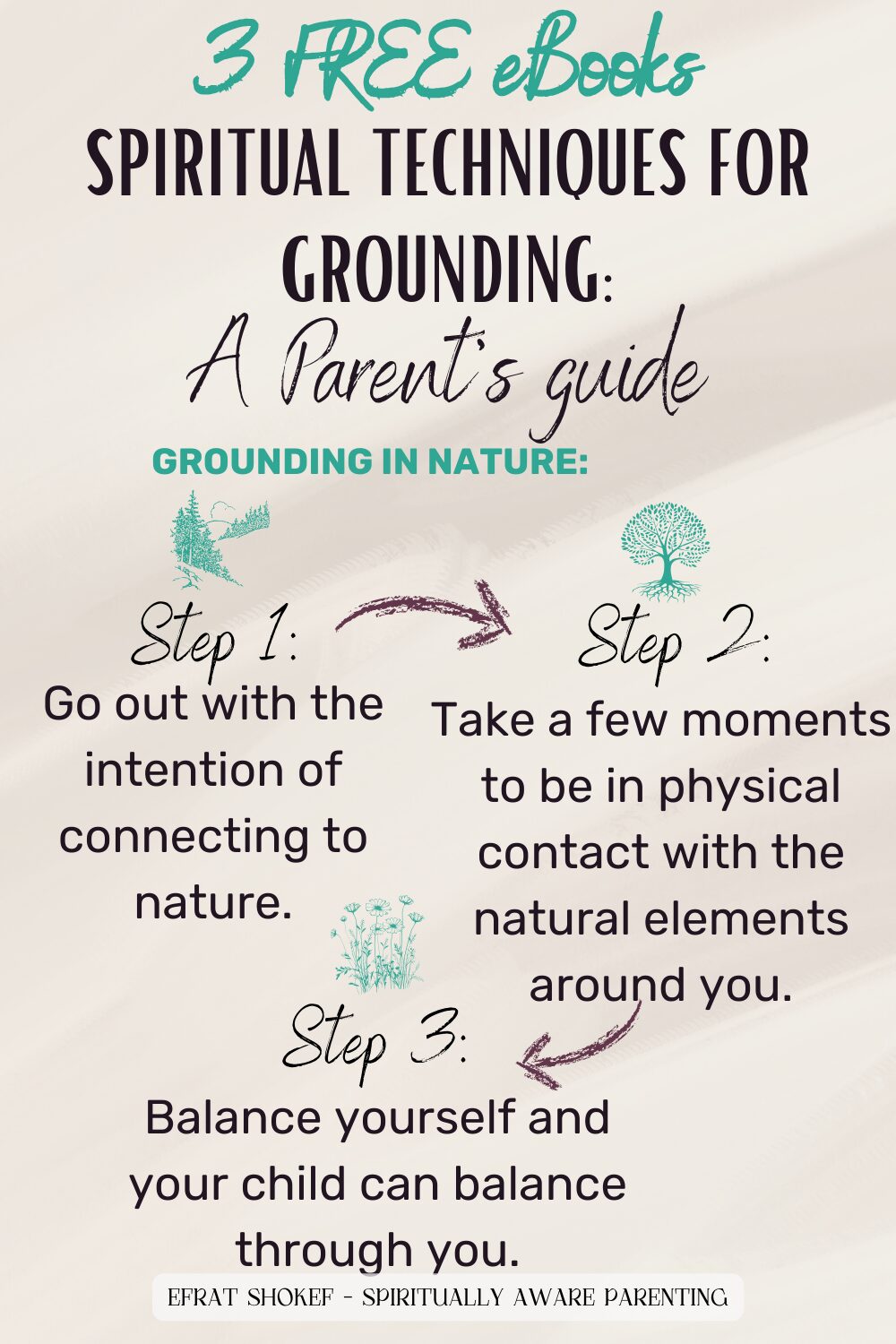
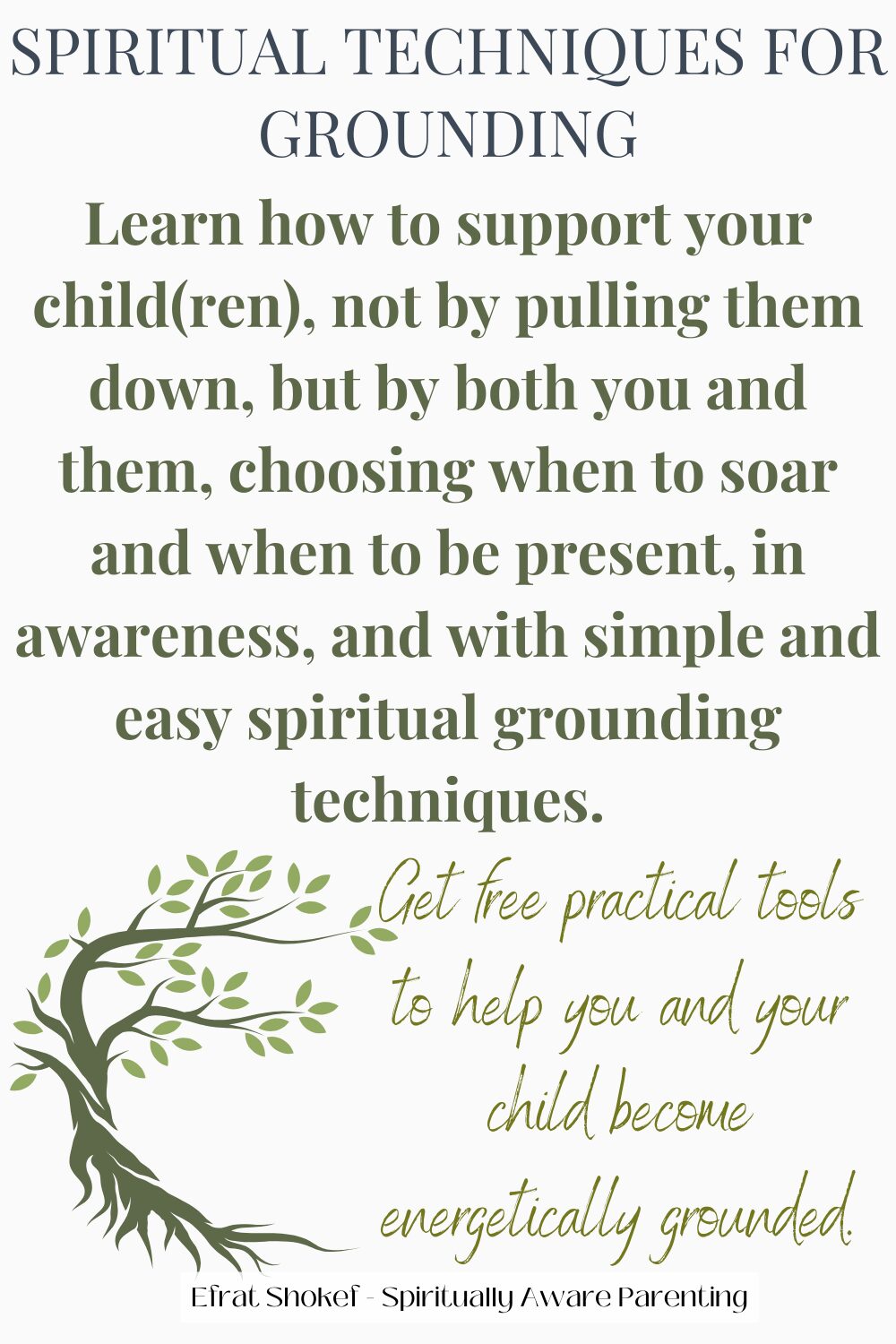
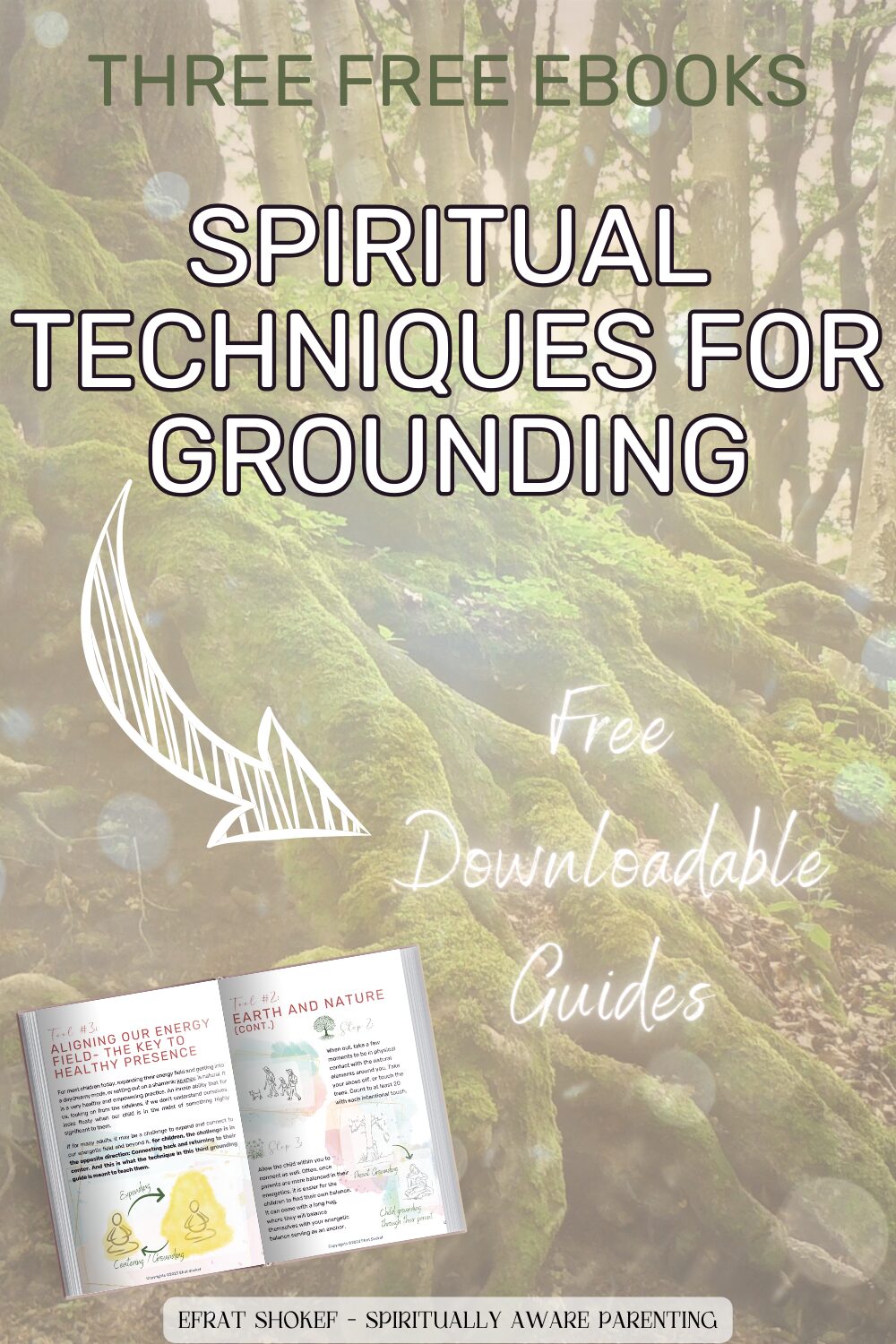
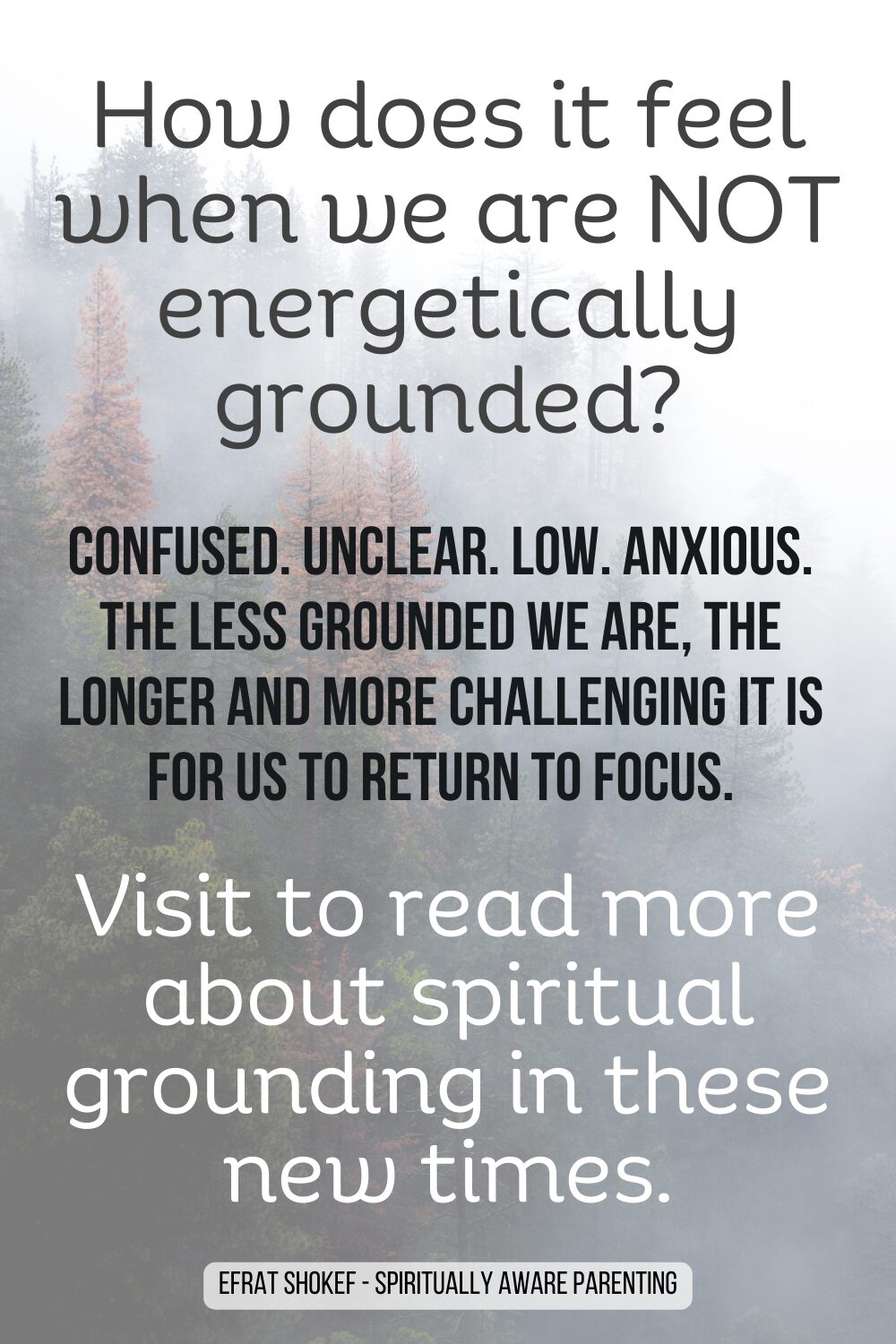


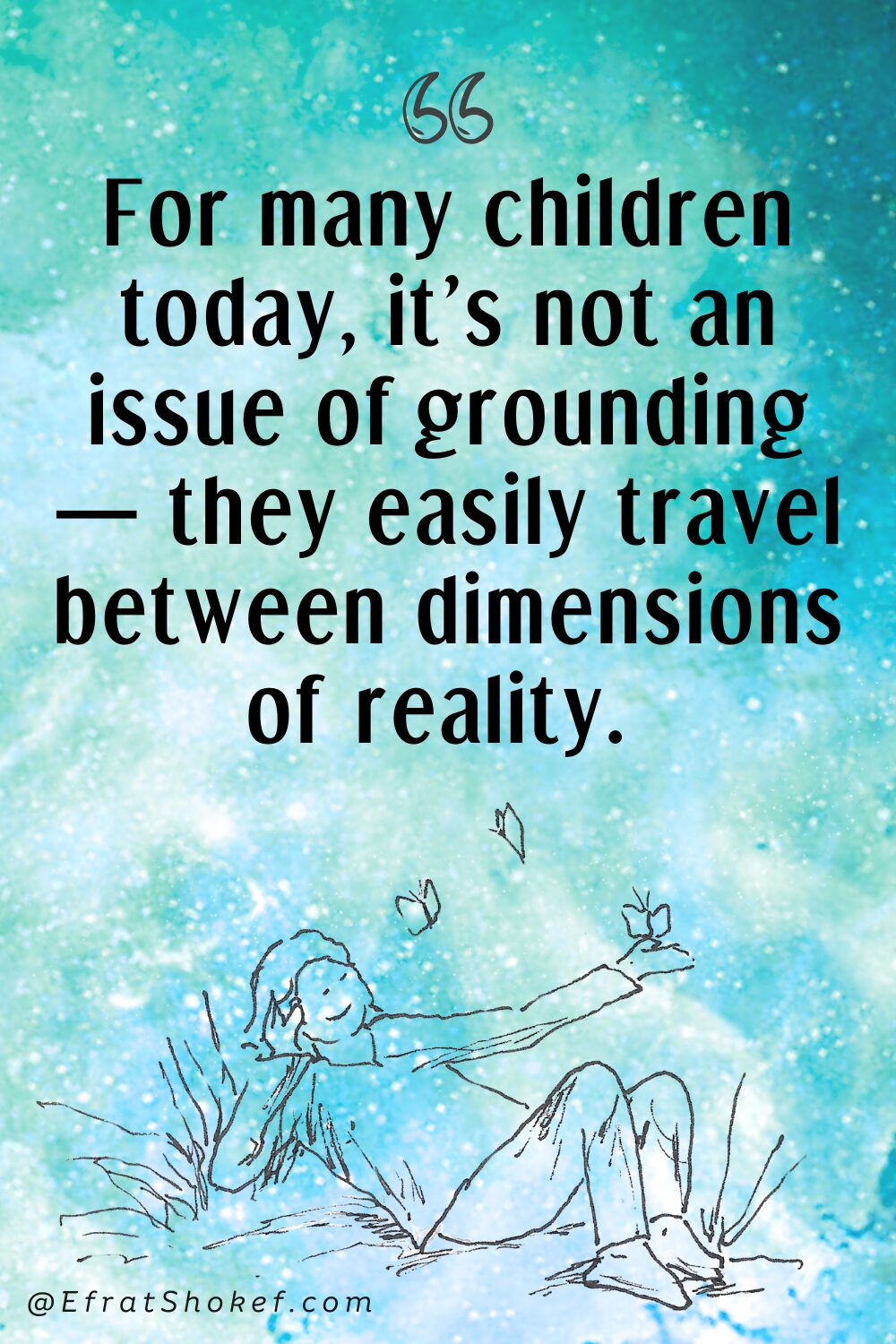
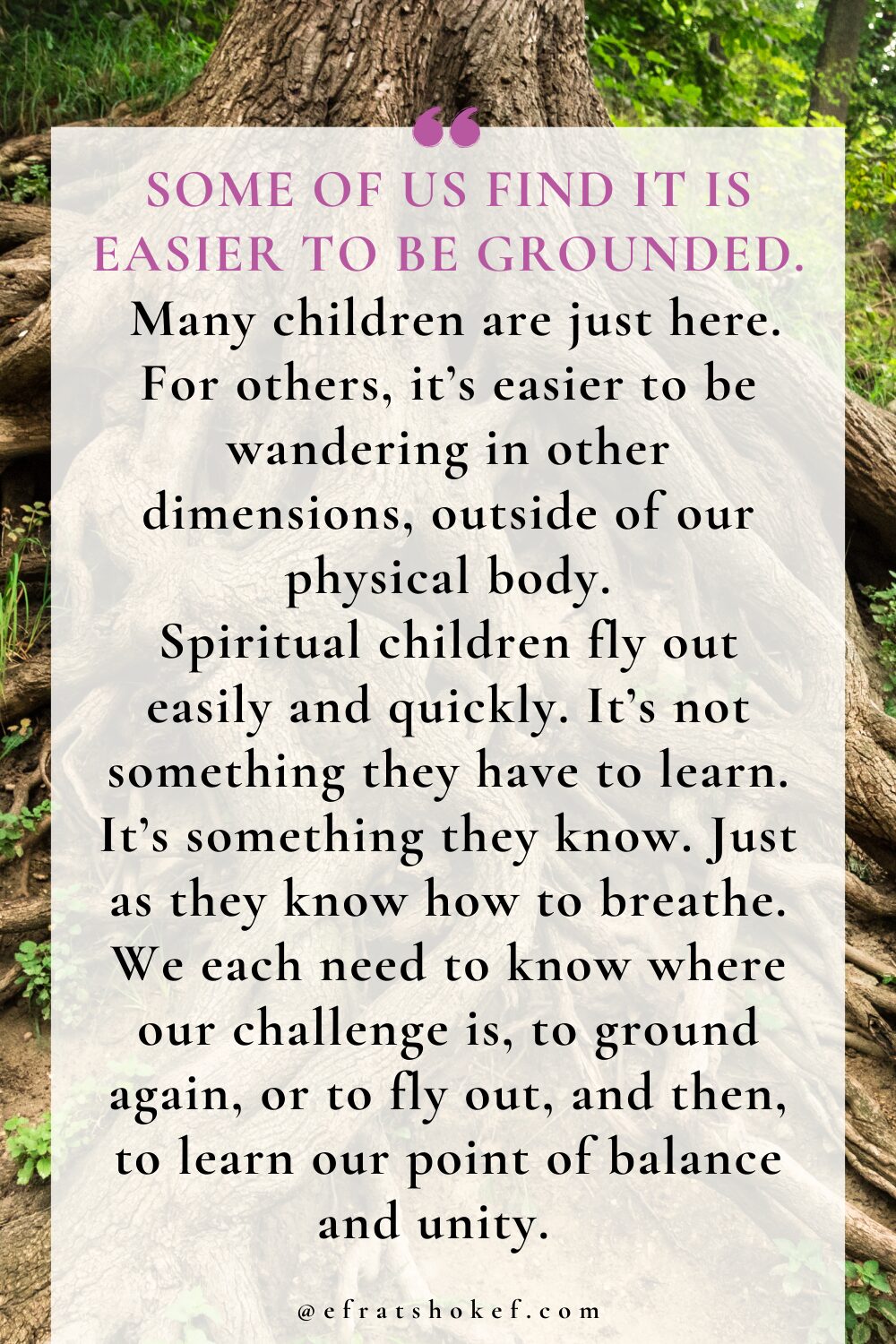
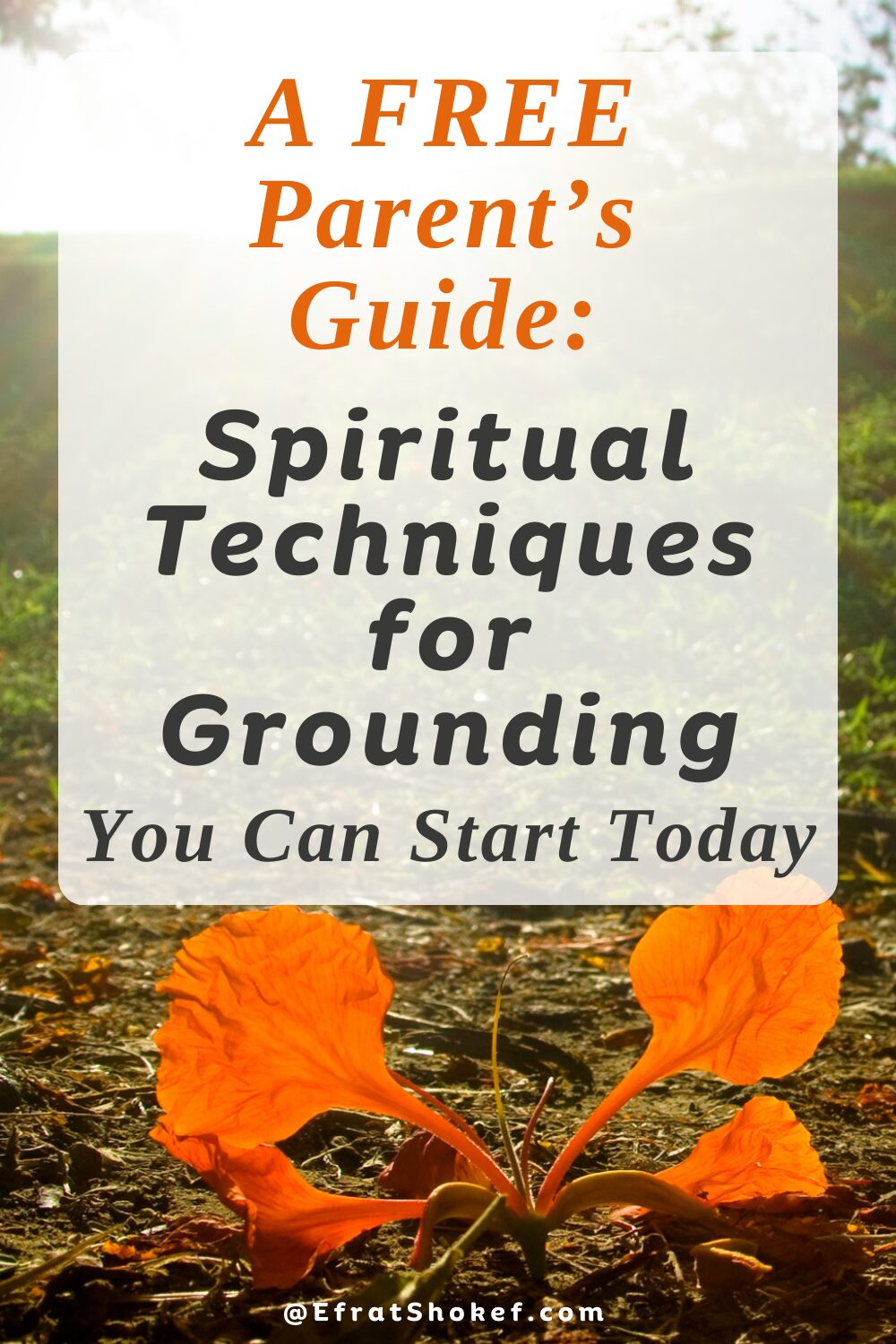


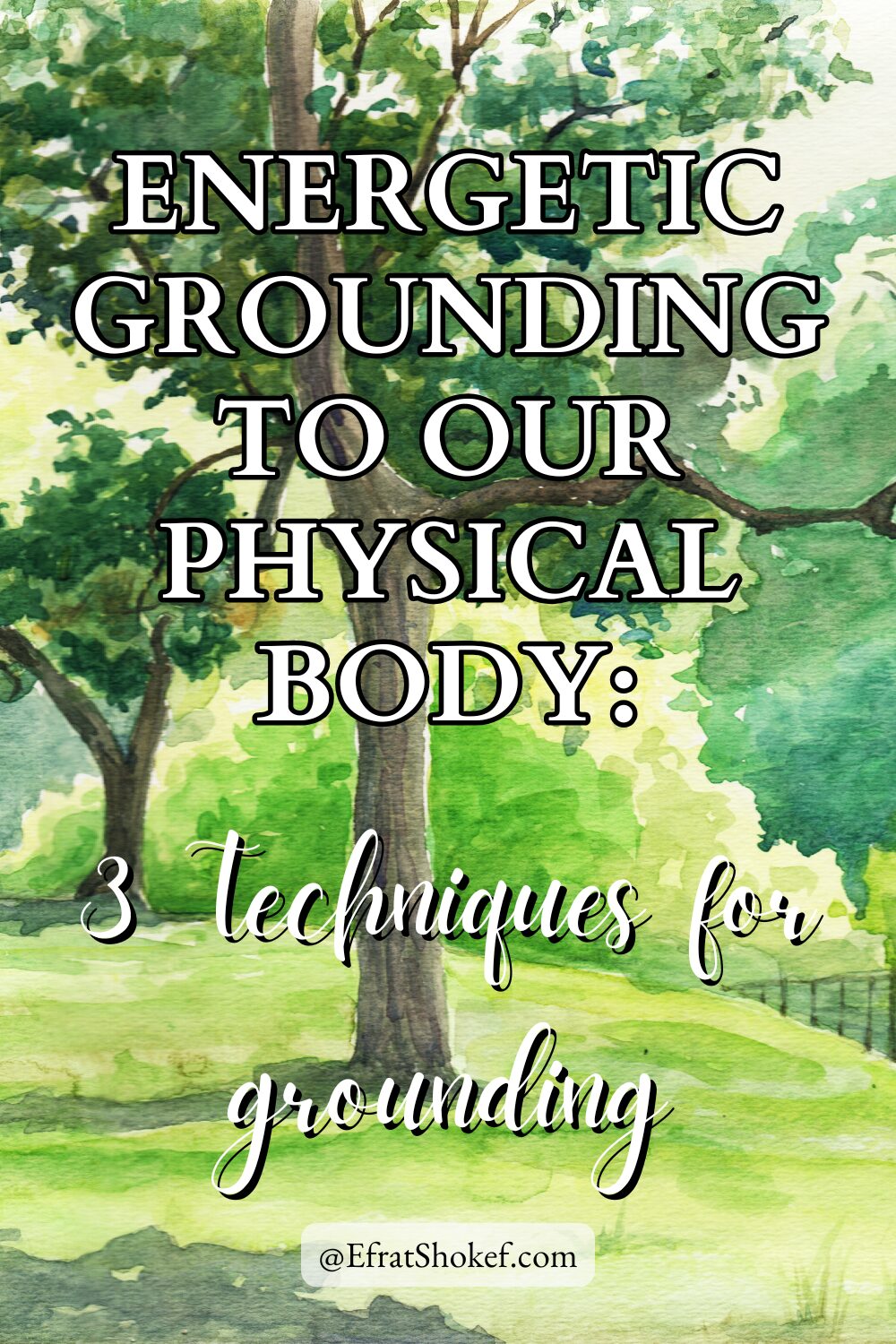
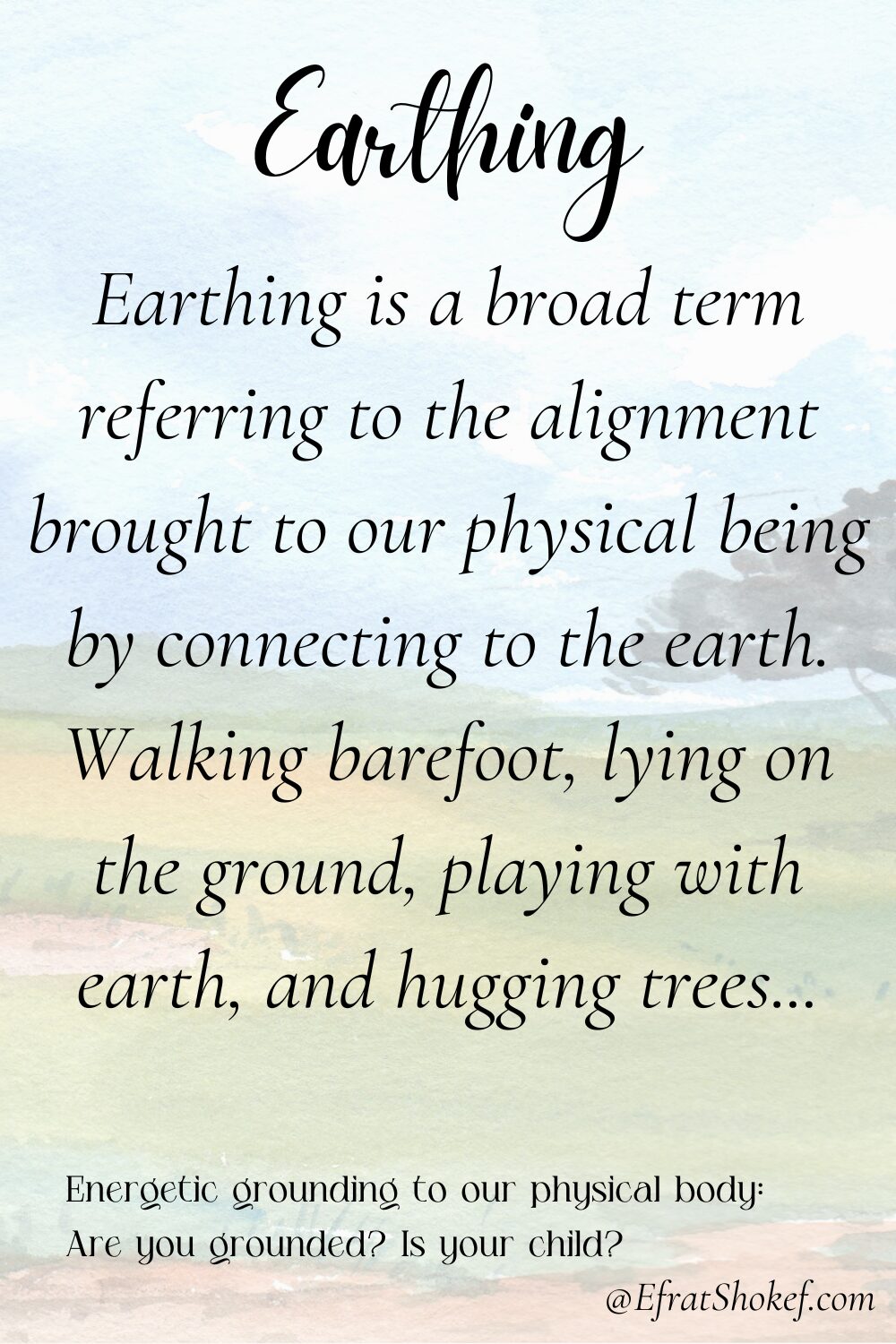


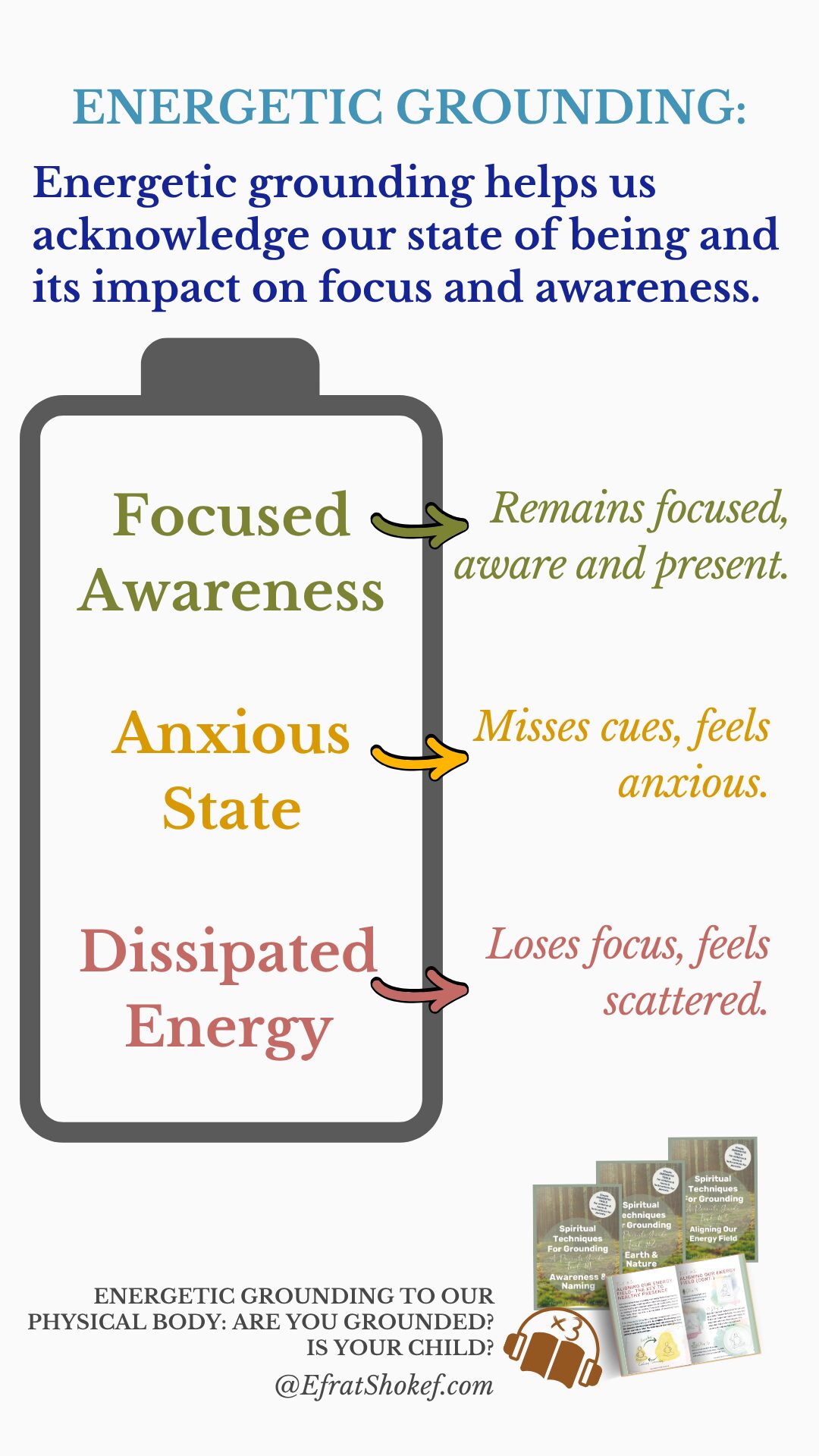
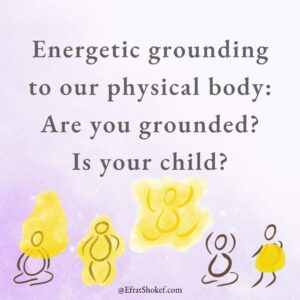

2 Responses
The importance of grounding cannot be overlooked, Efrat. It’s part of my daily morning ritual. During the pandemic lockdown times, I used to take my pet to the backlawns in my housing complex and we would walk on the grass and even sit there quietly absorbing nature. It helped to keep fear of the pandemic and uncertainty of the future in perspective.
I couldn’t agree with you more. Grounding and walking present are keys to fulfilling our (us & our children) life’s purpose here, on Earth.
Thank you for your important comment and share.